| Title | Puʻuhonua o Hōnaunau |
| Park Code | puho |
| Description | Imagine you had just broken the sacred laws, the kapu, and the only punishment was death. Your only chance of survival is to elude your pursuers and reach the Puʻuhonua, a place of refuge. The Puʻuhonua protected the kapu breaker, defeated warrio... |
| Location | |
| Contact | |
| Activities |
|
| Entrance fees |
Entrance - Private Vehicle
$20.00
Admits one single, private, non-commercial vehicle and all of its passengers (up to 8 persons). Organized non-profit groups (service organizations, scouts, church groups, college/school clubs) are not eligible for the vehicle permit. Good for entry into Puʻuhonua o Hōnaunau National Historical Park for seven days from the date of purchase.
Entrance - Motorcycle
$15.00
Admits one motorcycle. Good for entry into Puʻuhonua o Hōnaunau National Historical Park for seven days from the date of purchase.
Entrance - Per Person
$10.00
Admits one individual when entering by foot or bicycle. Good for entry into Puʻuhonua o Hōnaunau National Historical Park for seven days from the date of purchase. Individuals 15 years old and younger are admitted free of charge.
Entrance - Education/Academic Groups
$0.00
Academic institutions may be eligible for a fee waiver by simply filling out sections 1, 2, and 5 of our educational fee waiver application. If an educational fee waiver is not obtained, the standard entrance fees apply.
Entrance - Non-commercial Groups
$10.00
Non-commercial groups entering the park in a bus or vehicle with a capacity of 16 persons or more will be charged $10.00 for each person on board.
Commercial Entrance - Per Person
$10.00
All commercial tours that enter the park on a regular basis must have a Commercial Use Authorization (CUA) and are required to pay the commercial tour fee at the entrance station at each visit. For more information on how to get a CUA visit the Permits & Reservations page.
|
| Campgrounds | Count: 0
|
| Places | Count: 50
#1 - The Royal GroundsJourney back to ancient Hawaiʻi and walk in the footsteps the ancestors. On this first stop of the self-guided walking tour, explore the Royal Grounds, which were once reserved for the chiefdom of Kona. 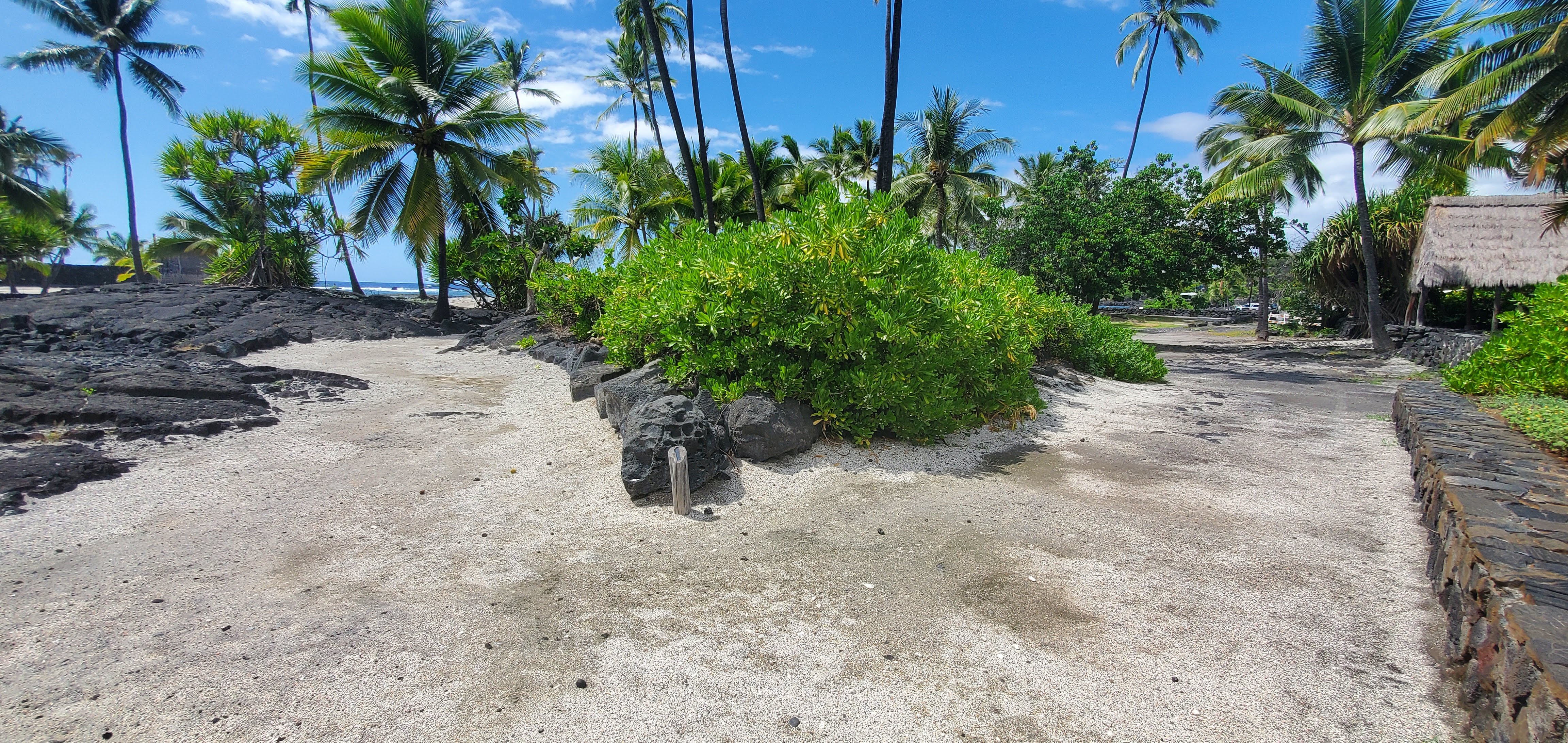
#10 - Keōua StoneThe 10th stop on the walking tour takes you to an unassuming bench-like boulder that is actually a relic that crosses the era of myth into the historical period, a memory from a distant past. 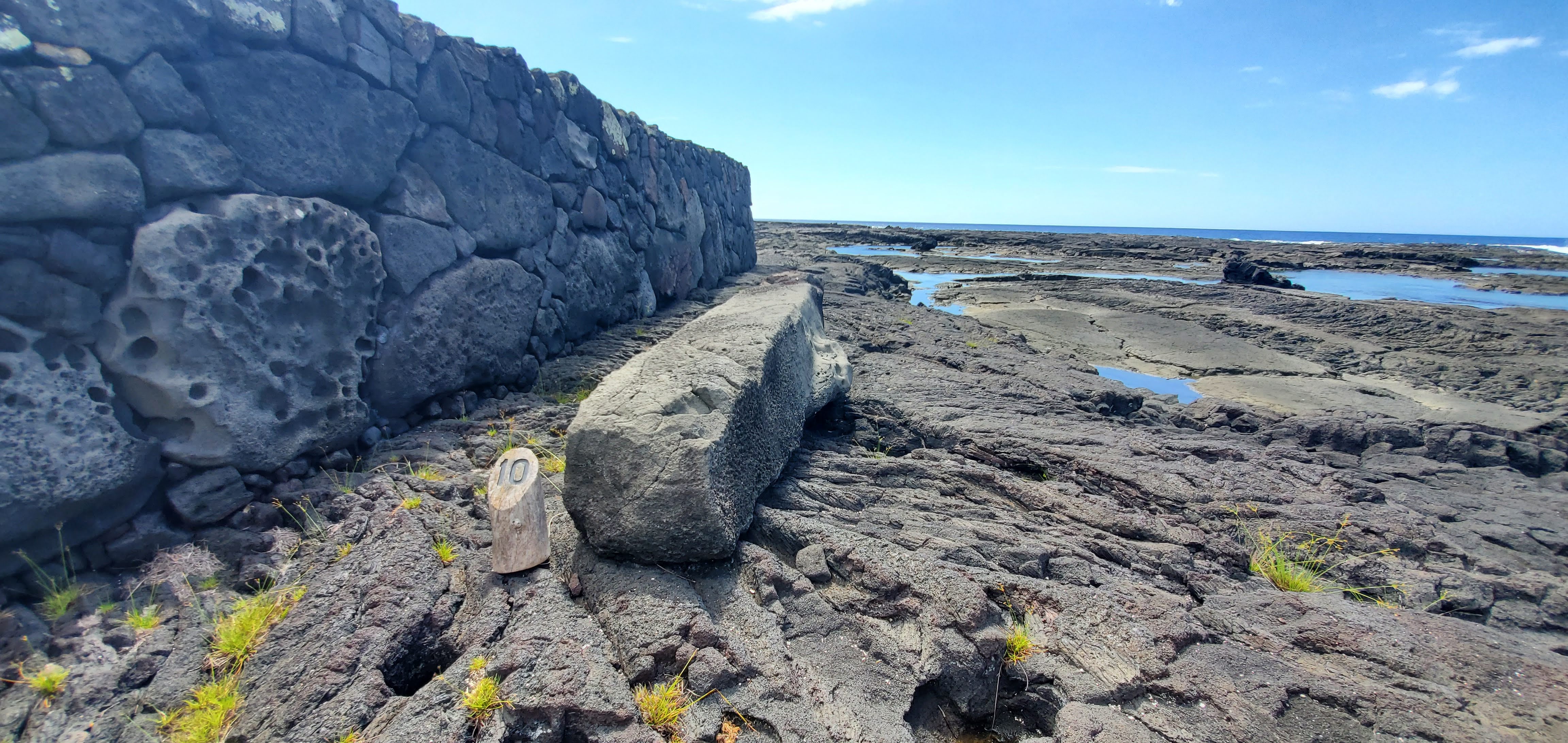
#11 - ʻĀleʻaleʻaStop number 11 on the walking tour is the ʻĀleʻaleʻa which was the primary heiau (temple) for the puʻuhonua before Hale o Keawe. Not fully restored, you must use your imagination to picture the thatched temple houses, carved kiʻi images, and wooden palisade that would top this platform. 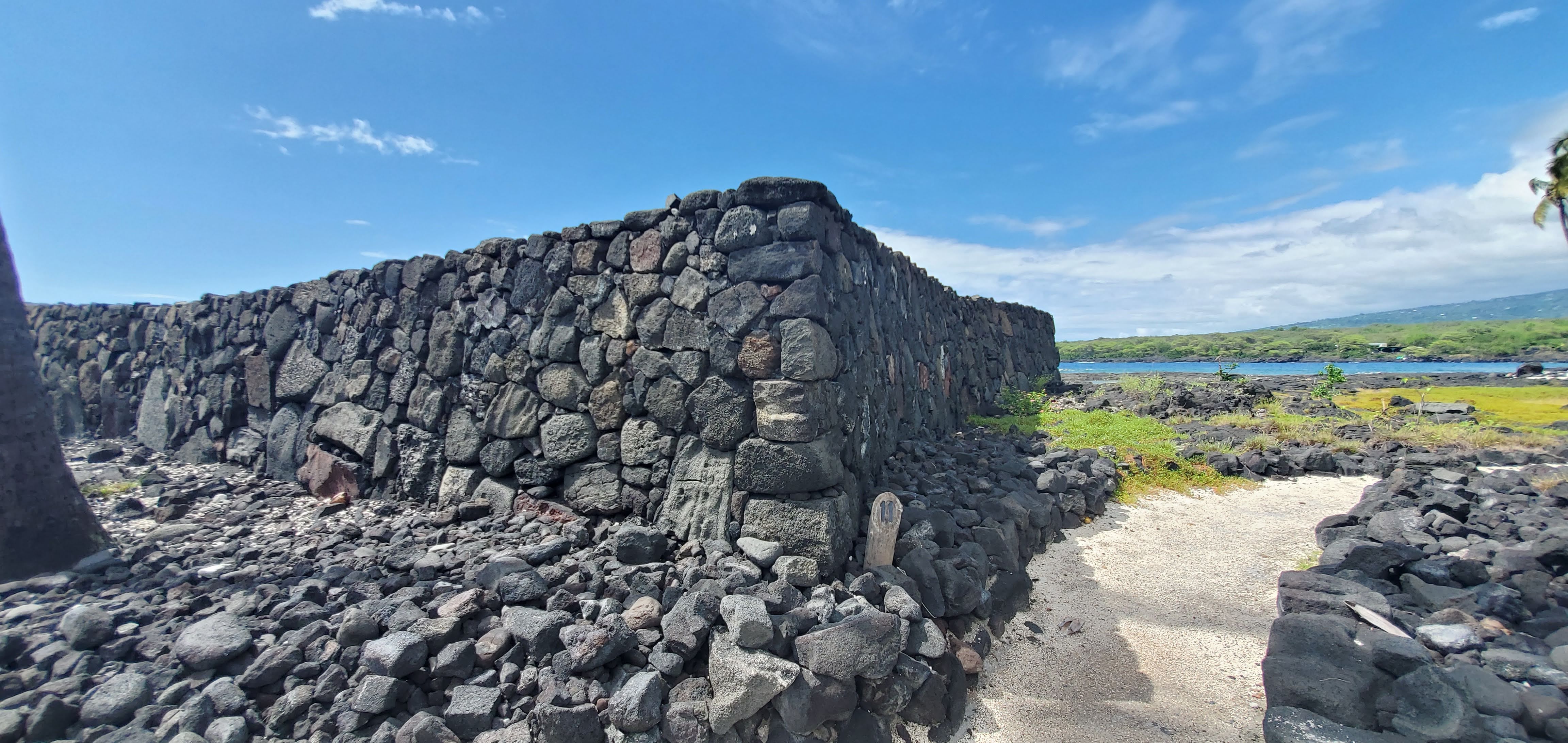
#12 - Kaʻahumanu StoneThe 12th stop on the walking tour tells a heart-stirring tale of love, regret, and power in Old Hawaiʻi. This rock is mentioned in a story of Queen Kaʻahumanu and King Kamehameha the Great. 
#13 - PapamūStop 13 takes you to an ancient kōnane papamū (playing surface) weathered with time. Upon close inspect you will notice nine rows of eleven carved depressions for playing pieces. 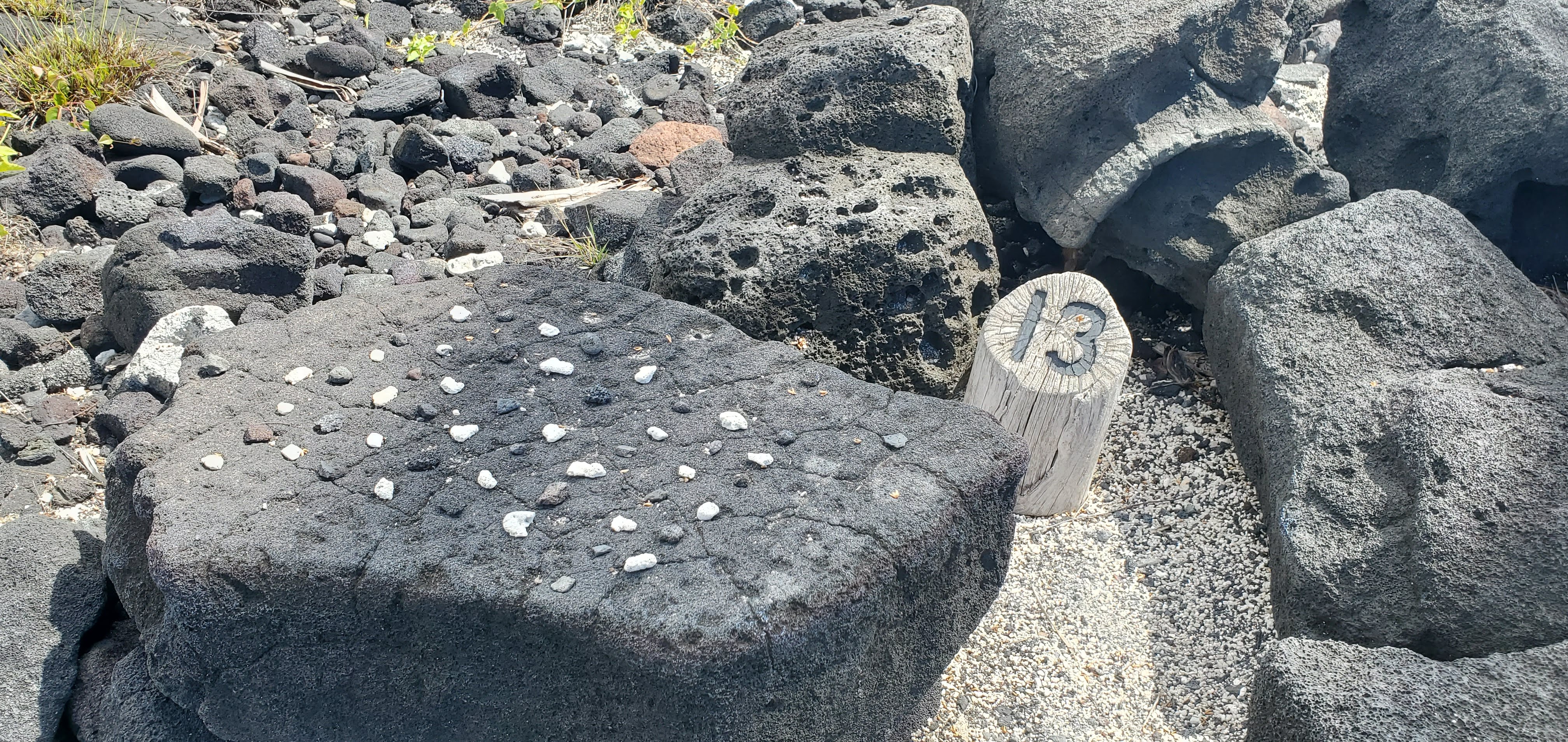
#14 - Old Heiau SiteStop number 14 on the walking tour reminds us to tread carefully when exploring our island as what may appear to be a mere pile of rocks might be the remains of a great heiau (temple) site. 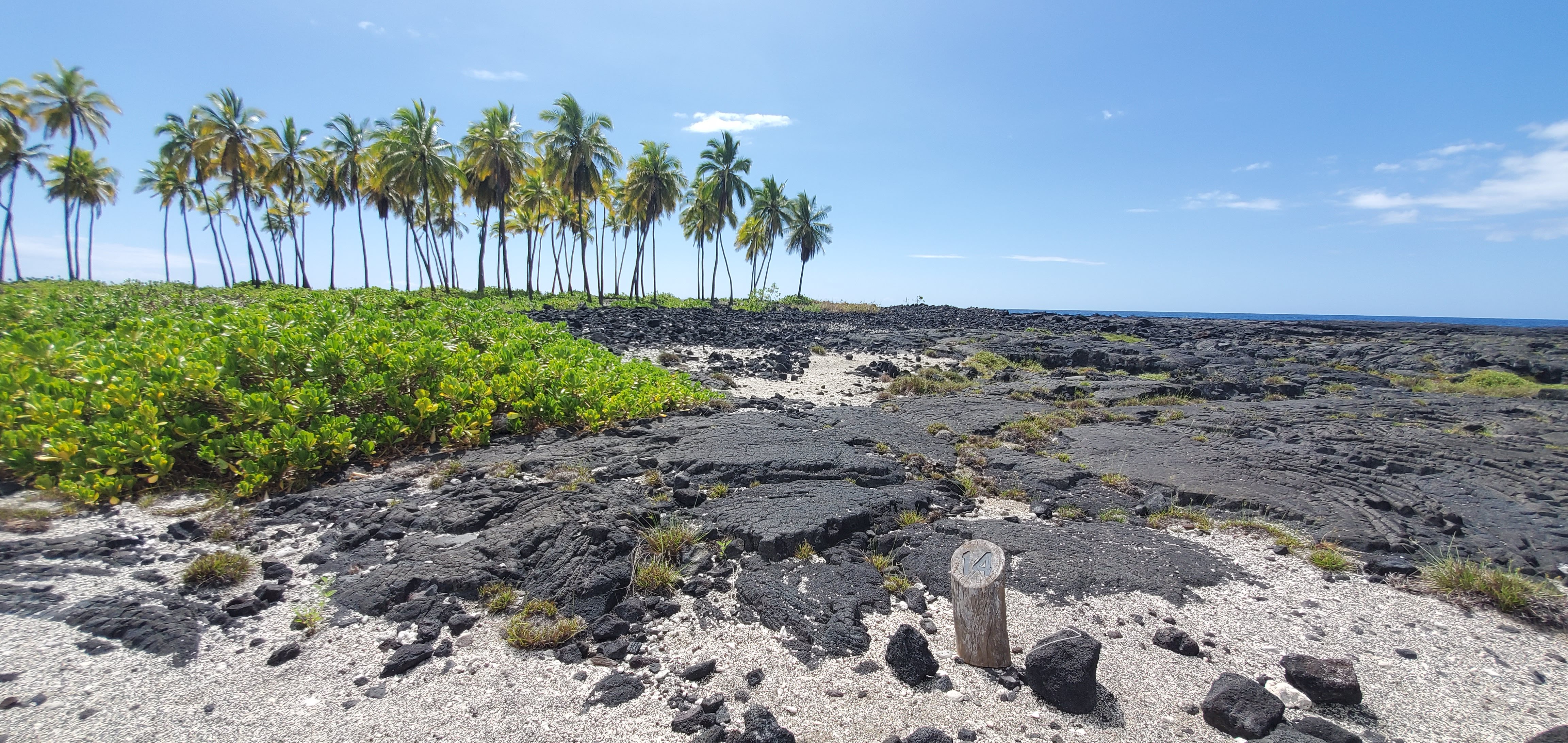
#15 - Royal Fish PondsThe 15th stop on the walking tour takes you to two tranquil lokoiʻa or fishponds that were once meticulously and sustainably managed to provide food for the aliʻi (royalty) who visited the Royal Grounds of Hōnaunau. 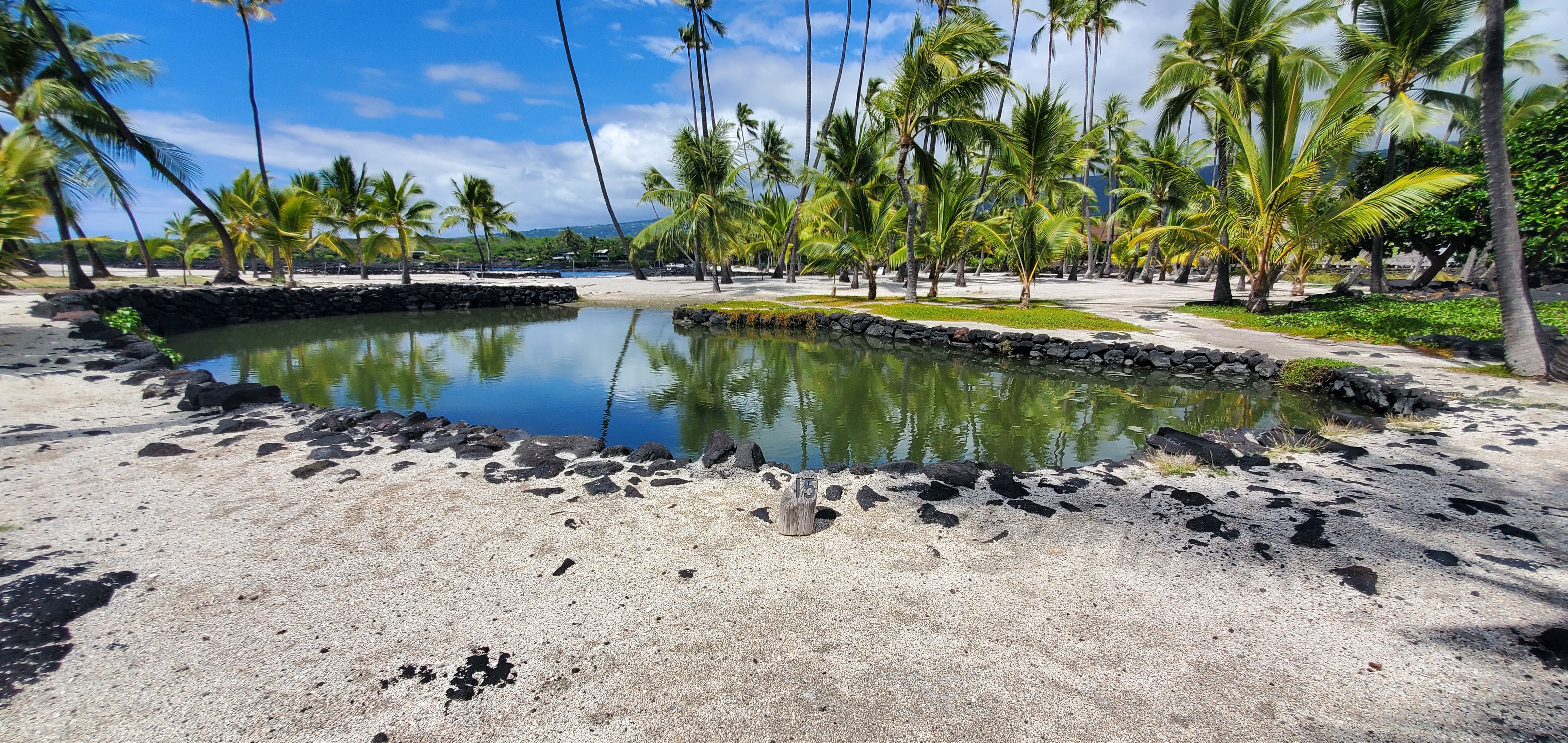
#16 - HālauOn stop 16 of the walking tour see the two open-air long houses called hālau. In ancient Hawaiʻi these structures would have been meeting places, places for storing canoe, and places of learning. The tradition continues today as cultural practitioners use this place to pass on their manaʻo (thought) and ʻike (wisdom). 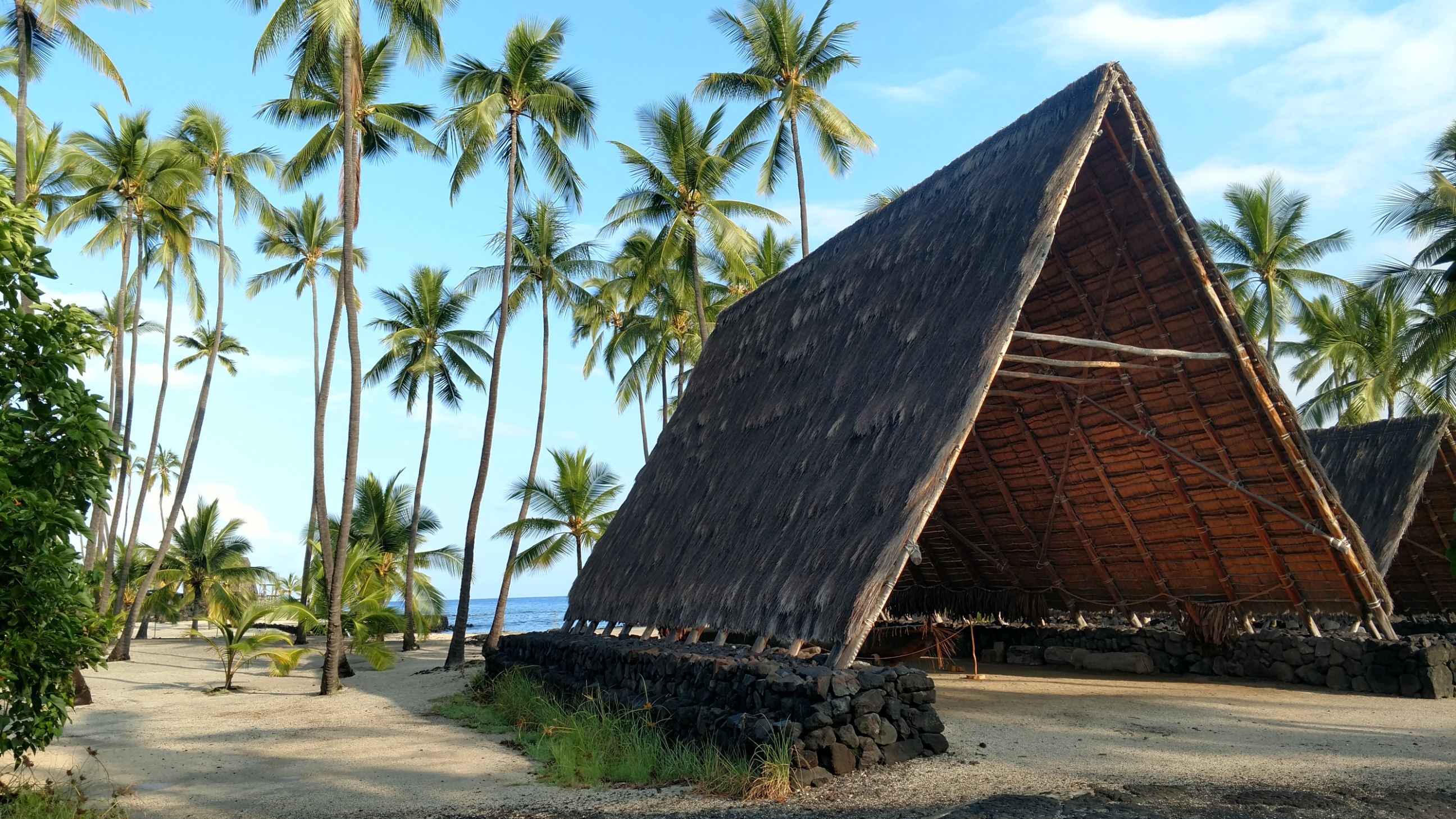
#2 - The Temple ModelA small reconstruction of the Hale o Keawe heiau lets you see the interior of a typical hale poki (consecrated house) structure and admire the ingenuity of traditional Hawaiian building techniques. 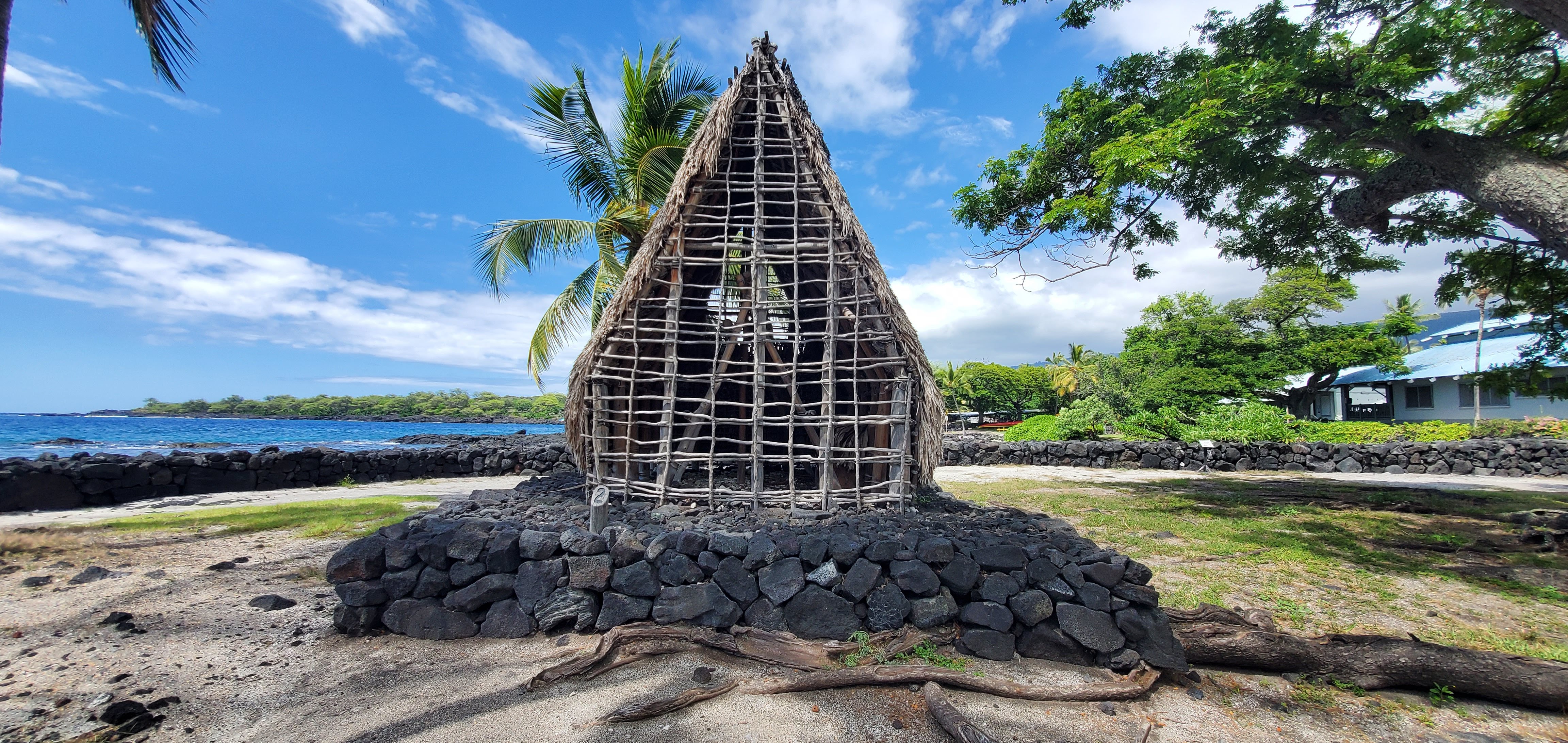
#3 - KōnaneA game of strategy and wits, kōnane was more than a game of leisure, it was also a political tool, often used to settle disputes. Test your wits and try a game today! 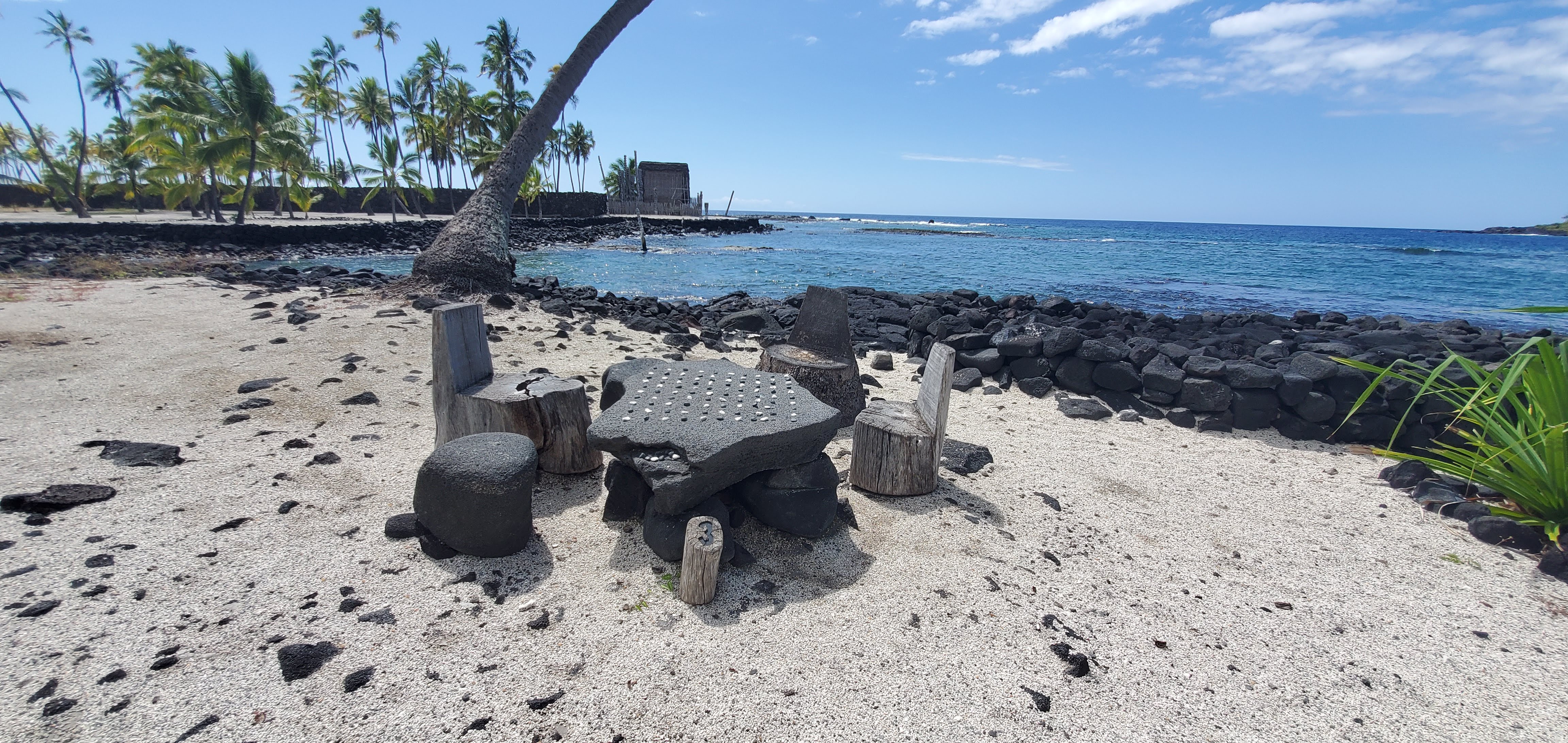
#4 - KānoaThe fourth stop on the walking tour shows ancient bowls called kānoa that were carved into the lava rock. These subtle archeological features remind us of the active lifestyle engaged in by the native Hawaiians of old. 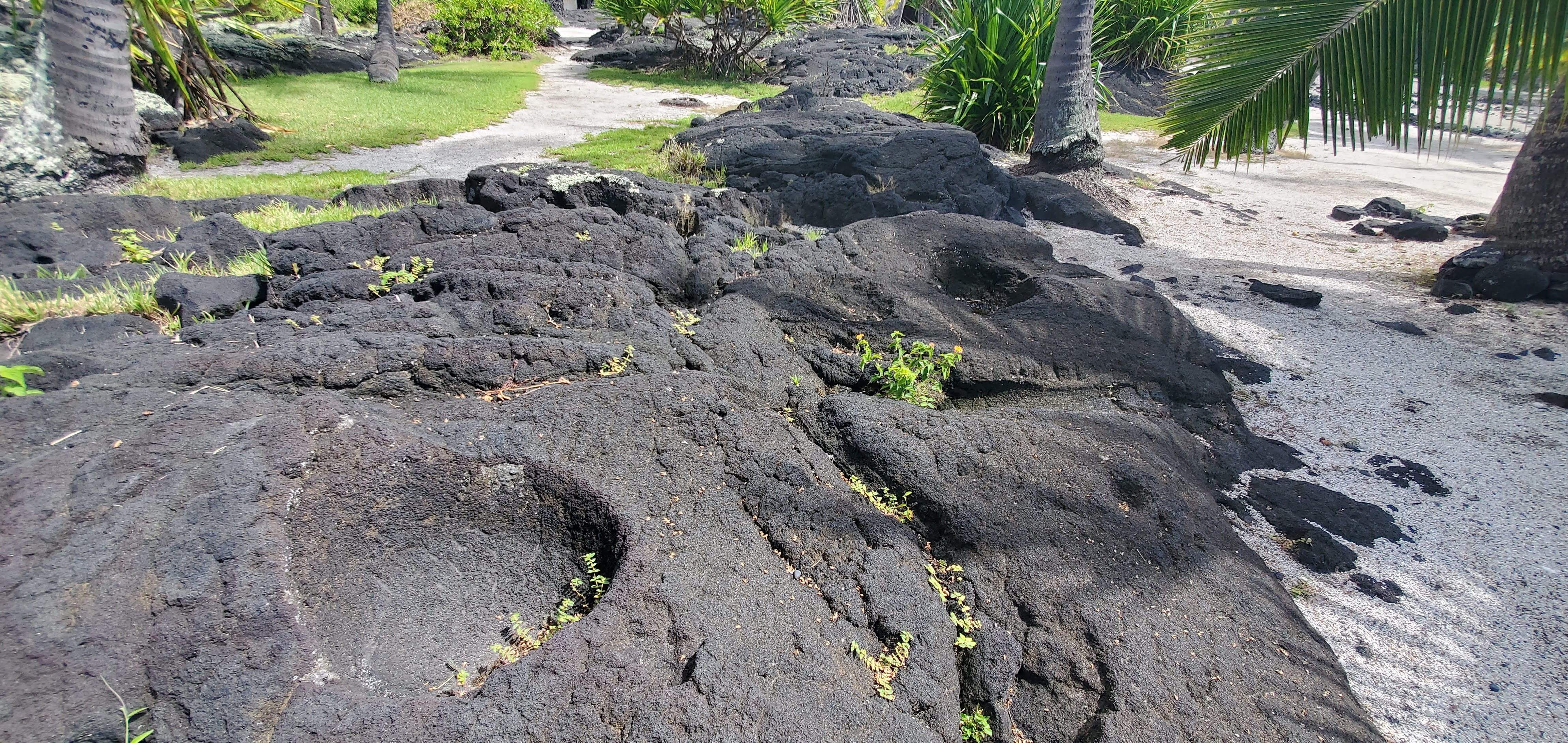
#5 - Tree MoldWhile the area appears tranquil today, evidence of a more tumultuous past is hidden in the lava rock. Can you spot it? The fifth stop on the walking tour lets you take a closer look at tree molds. 
#6 - Keoneʻele CoveFor centuries, this protected cove was used as a canoe landing for visiting Hawaiian chiefs. At this stop on the walking tour, learn about traditions associated with this canoe landing and the natural resources protected here today. 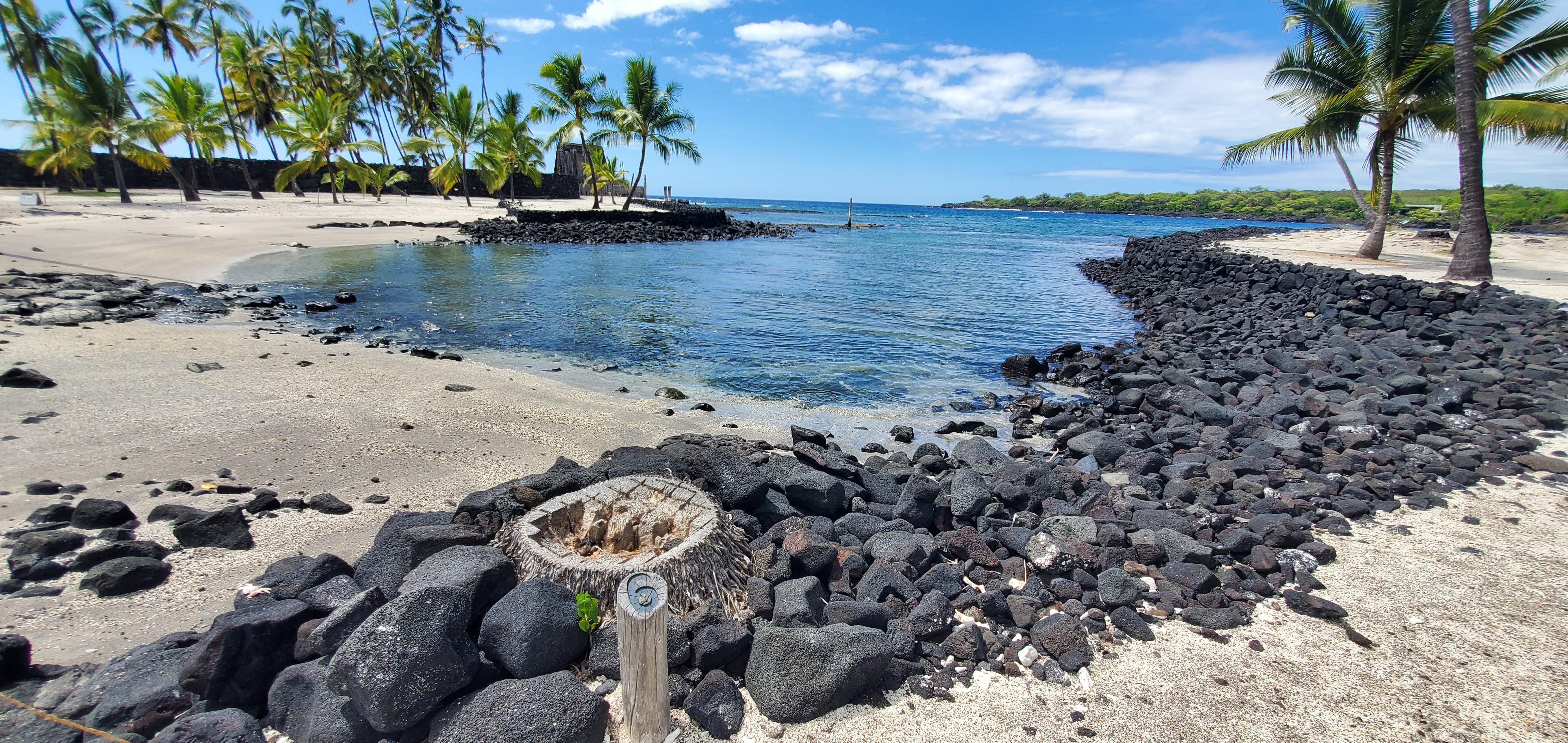
#7 - The Great WallThe 7th stop on the walking tour takes you to one of the most impressive features in the park, the Great Wall. See an extraordinary example of uhau humu pōhaku (Hawaiian dry-set masonry), built by stacking interlocking rocks without the use of mortar. 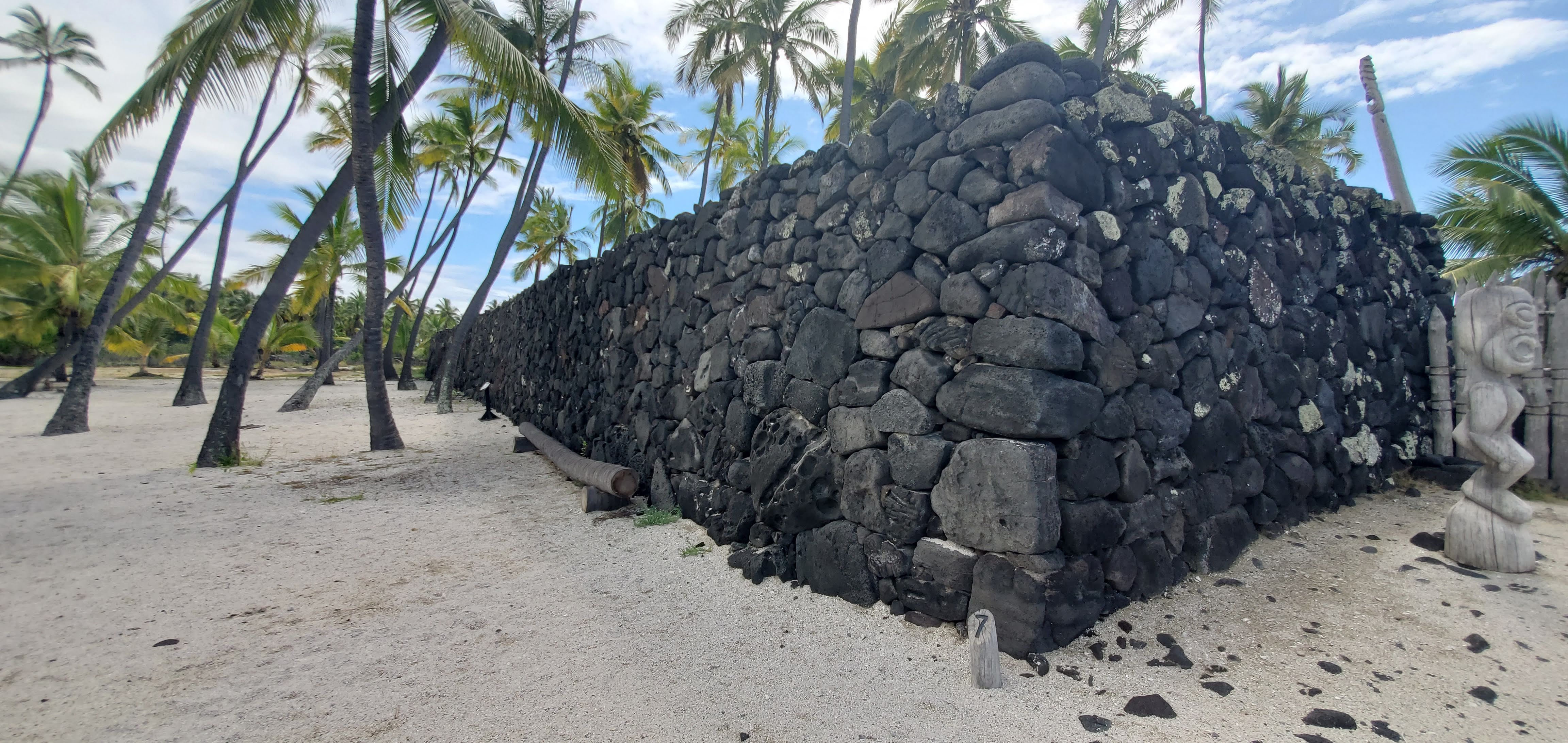
#8 - Hale o KeaweHale o Keawe is perhaps the most iconic scene at Puʻuhonua o Hōnaunau with thatched hale poki, intricately carved kiʻi, and lele (offering tower). This wahi kapu (sacred place) remains an active place of worship for Native Hawaiians today. 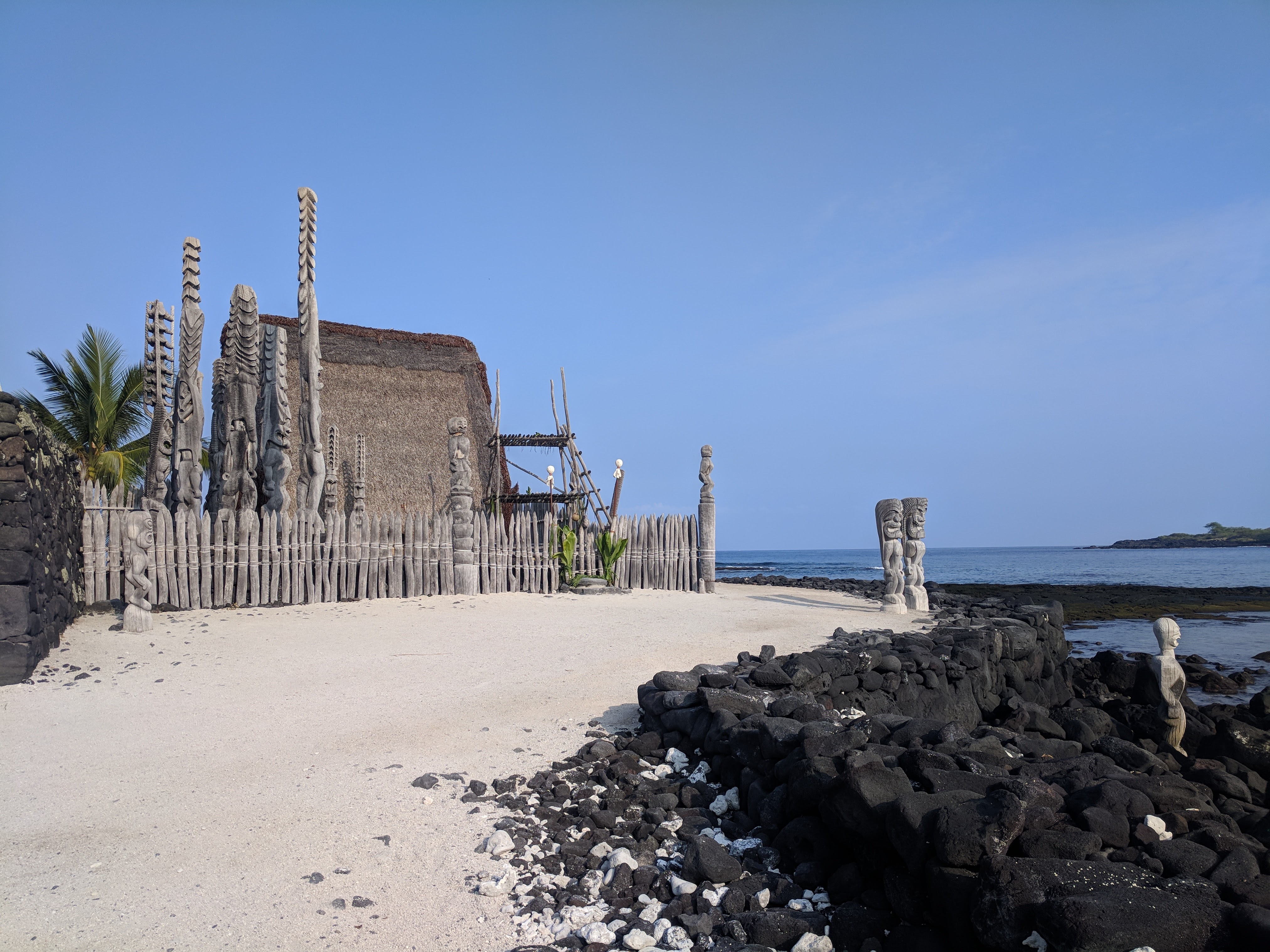
#9 - The PuʻuhonuaOne of the most well-preserve puʻuhonua, or place of refuge, within the islands, Puʻuhonua o Hōnaunau served as a safe haven for breakers of kapu, defeated warriors, and non-combatants. 
1871 Trail Composting Toilet
1871 Trail IntroductionThe 1871 Trail is a section of the larger Ala Kahakai National Historic Trail, a 175-mile long trail corridor on Hawaiʻi Island. 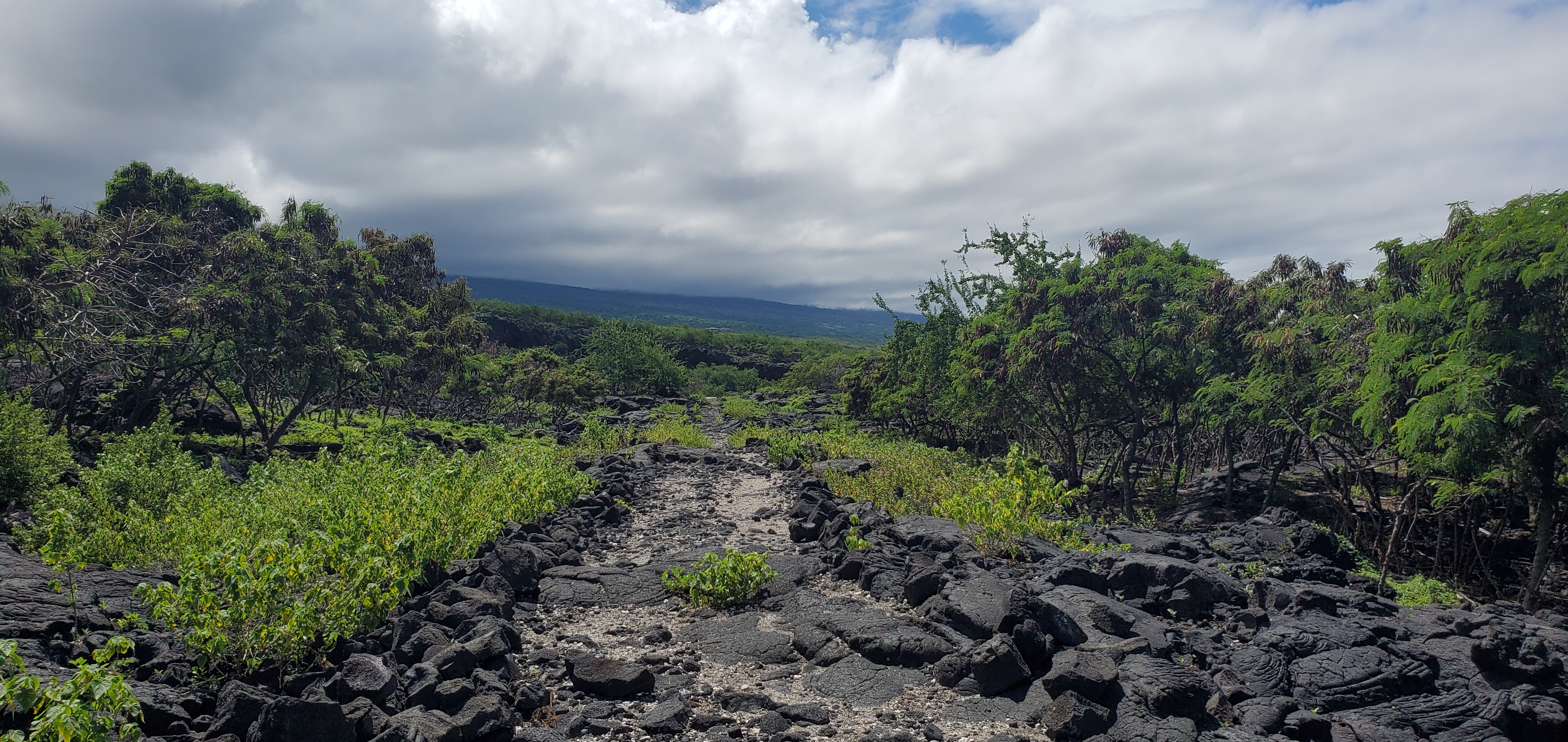
1871 Trail Tour ConclusionThe journey down the 1871 trail and into the past makes us wonder what knowledge or lessons from the past can we apply to our world today? 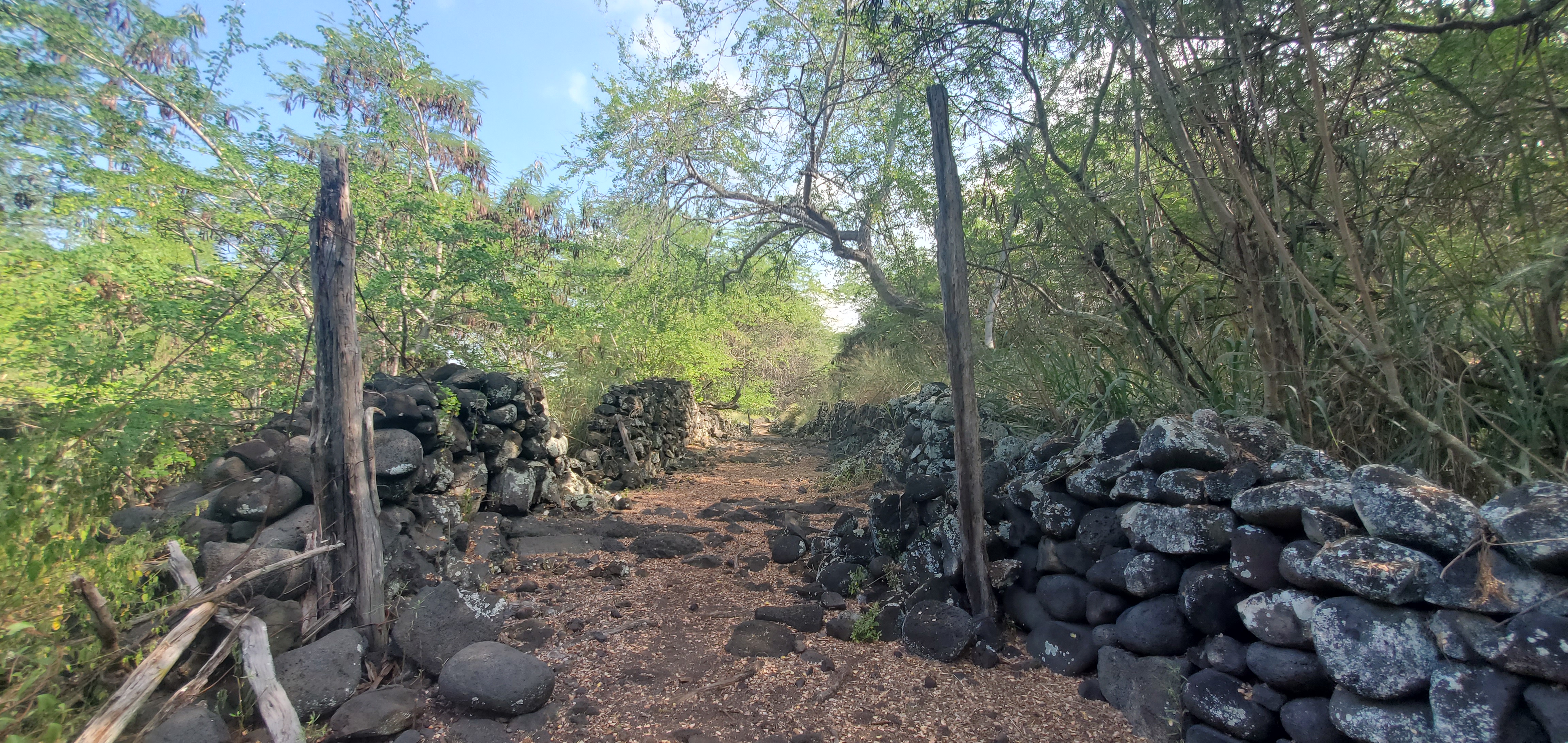
1871 TrailheadThe rugged lava shoreline of the South Kona coast beckons you to explore the backcountry trails of the park. Have you ever imagined visiting a historic abandoned Hawaiian village? Come and experience this special and unique area. Step back in time. The ocean will whisper ancient stories from the past as you pass by places used by people of long ago. 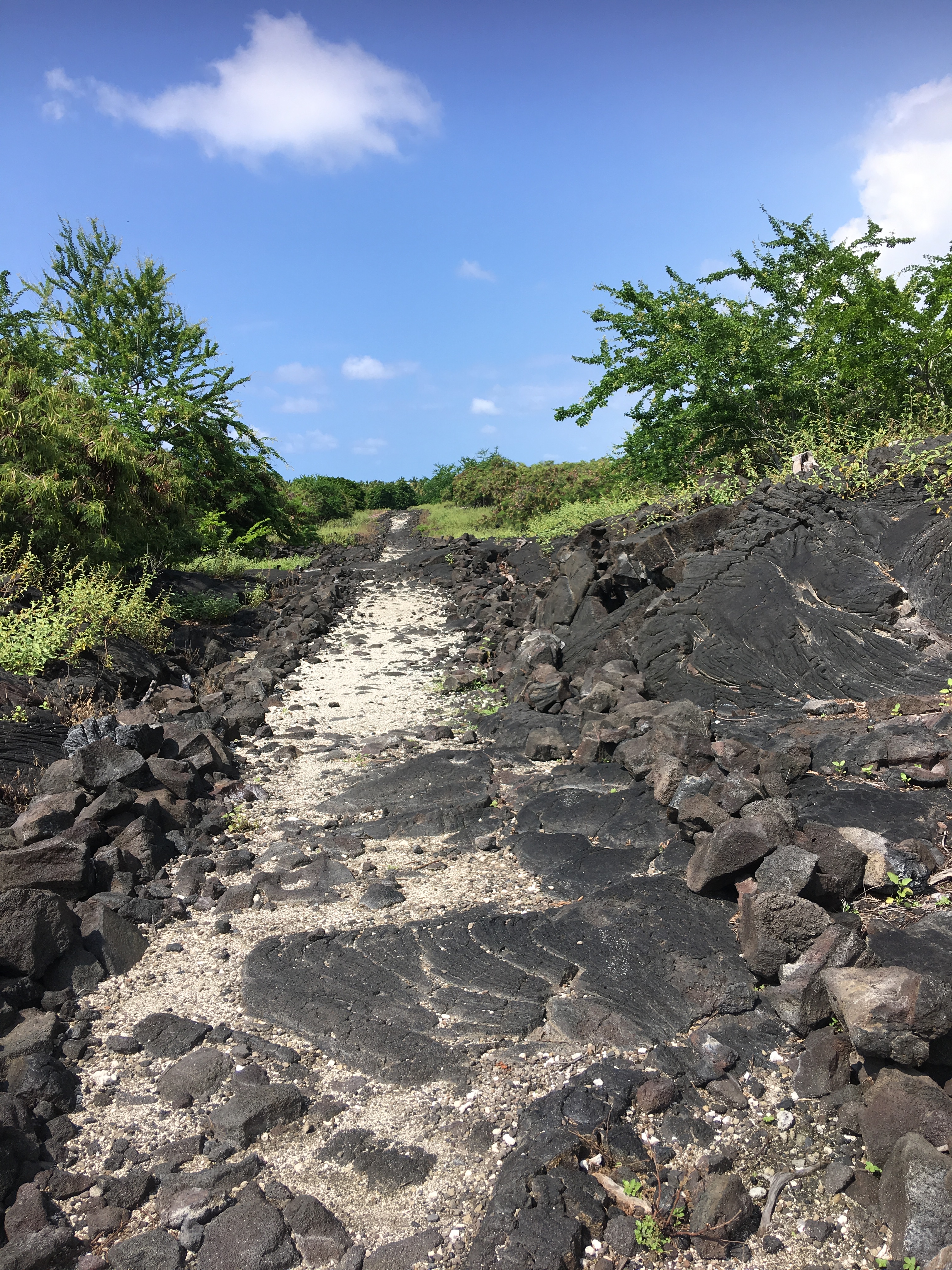
A - Hōnaunau HoluaCan you imagine sledding down a lava rock slope on a sled no wider than 12 inches? This hōlua was used by the aliʻi (royalty) in the area to prove their agility and bravery as they sledded down the steep slope. 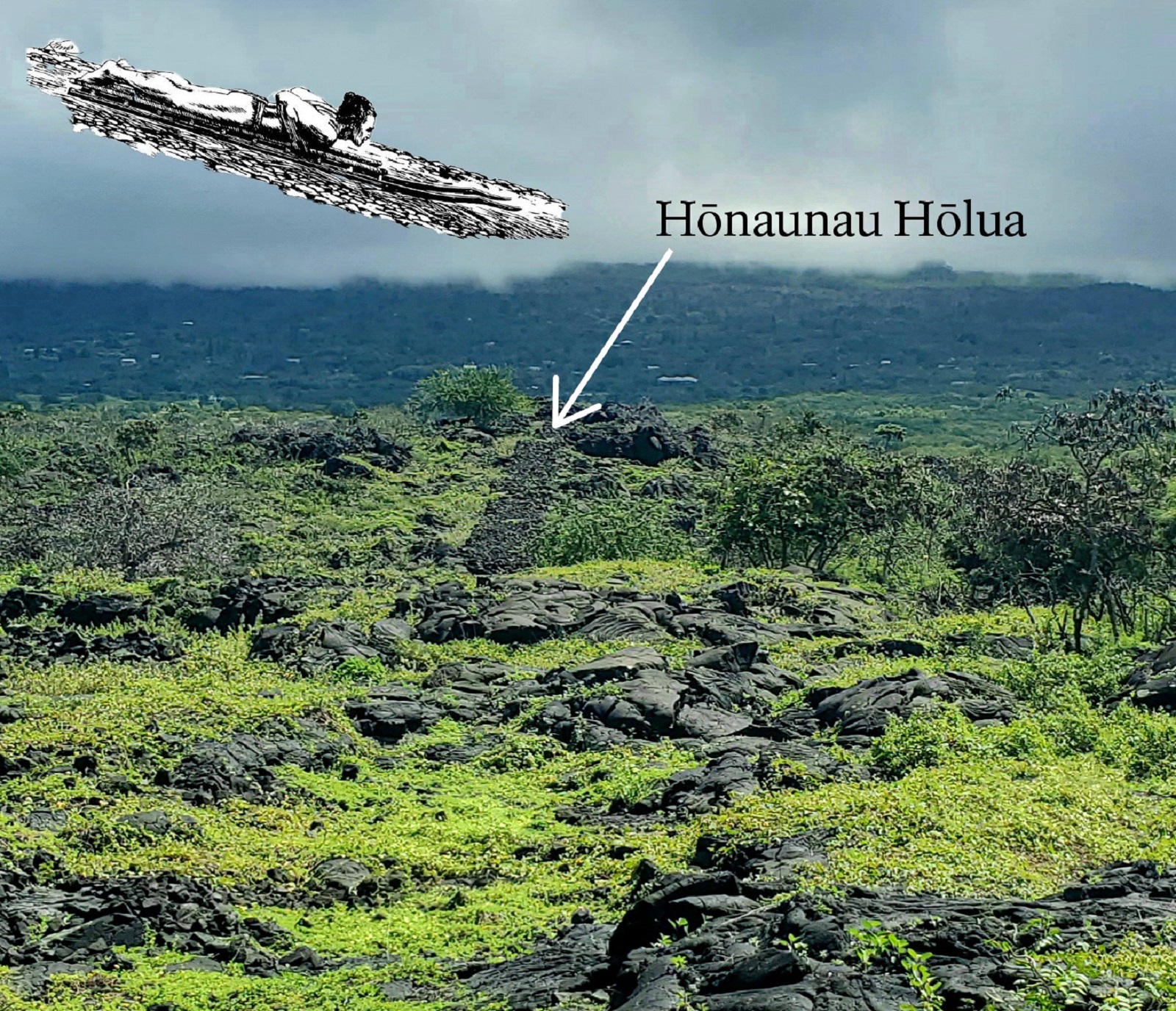
B - Kōnane PapamūAn ancient kōnane playing surface, or papamū, sits on the side of the 1871 trail. One of many along the trail and coastline. 
C - Stone Walls & CurbstonesThe stone walls of historic enclosures aren't the only thing that lines the trail at this location. Curbstones along the edges of the trail help delineate the trail for pack animals. 
D - ʻŌmaʻo HeiauA large pile of rubble and an upright standing stone is all that remains of the ʻŌmaʻo heiau (temple). 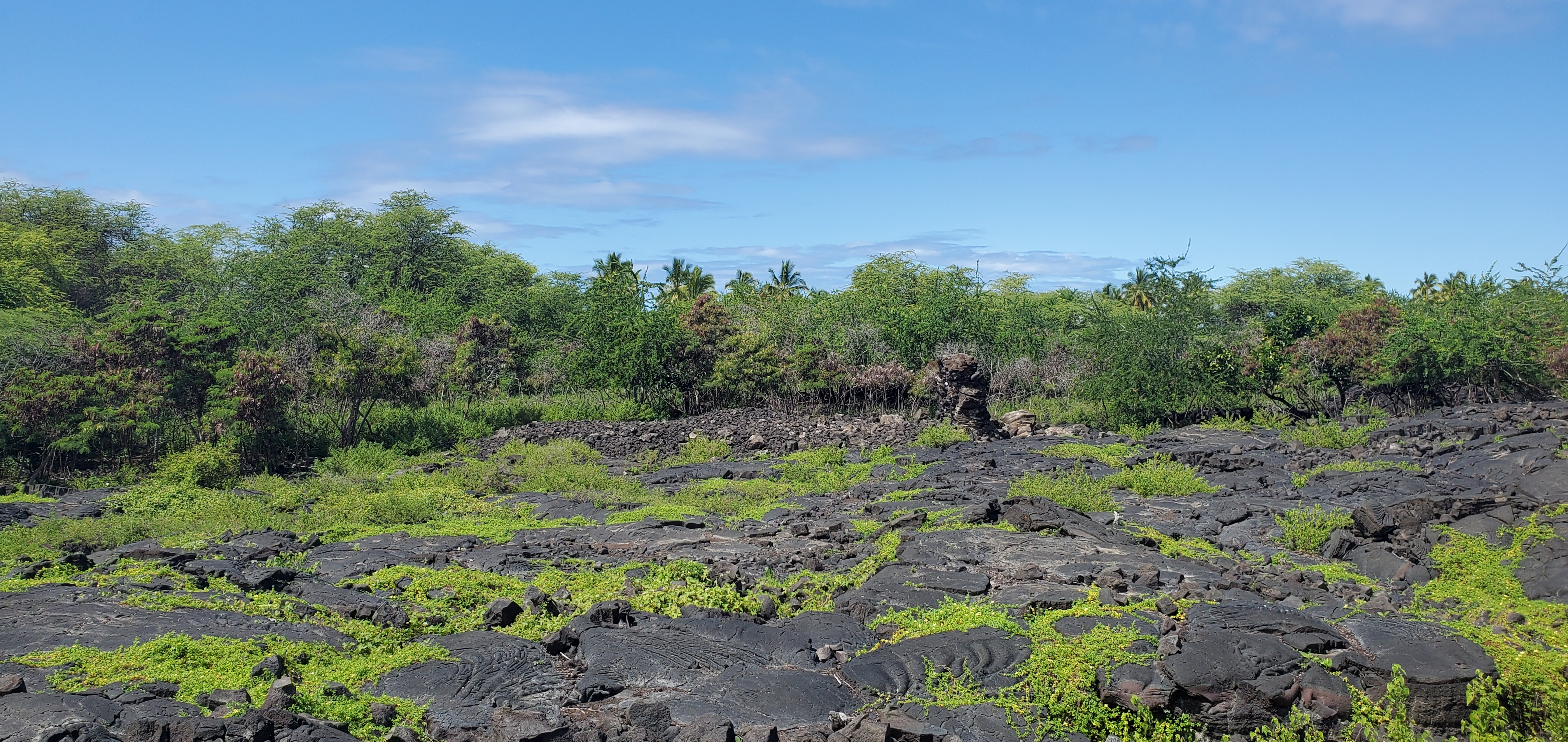
E - Kēōkea HōluaThe Kēōkea Hōlua is one of two hōlua slides that you can view from the 1871 trail. 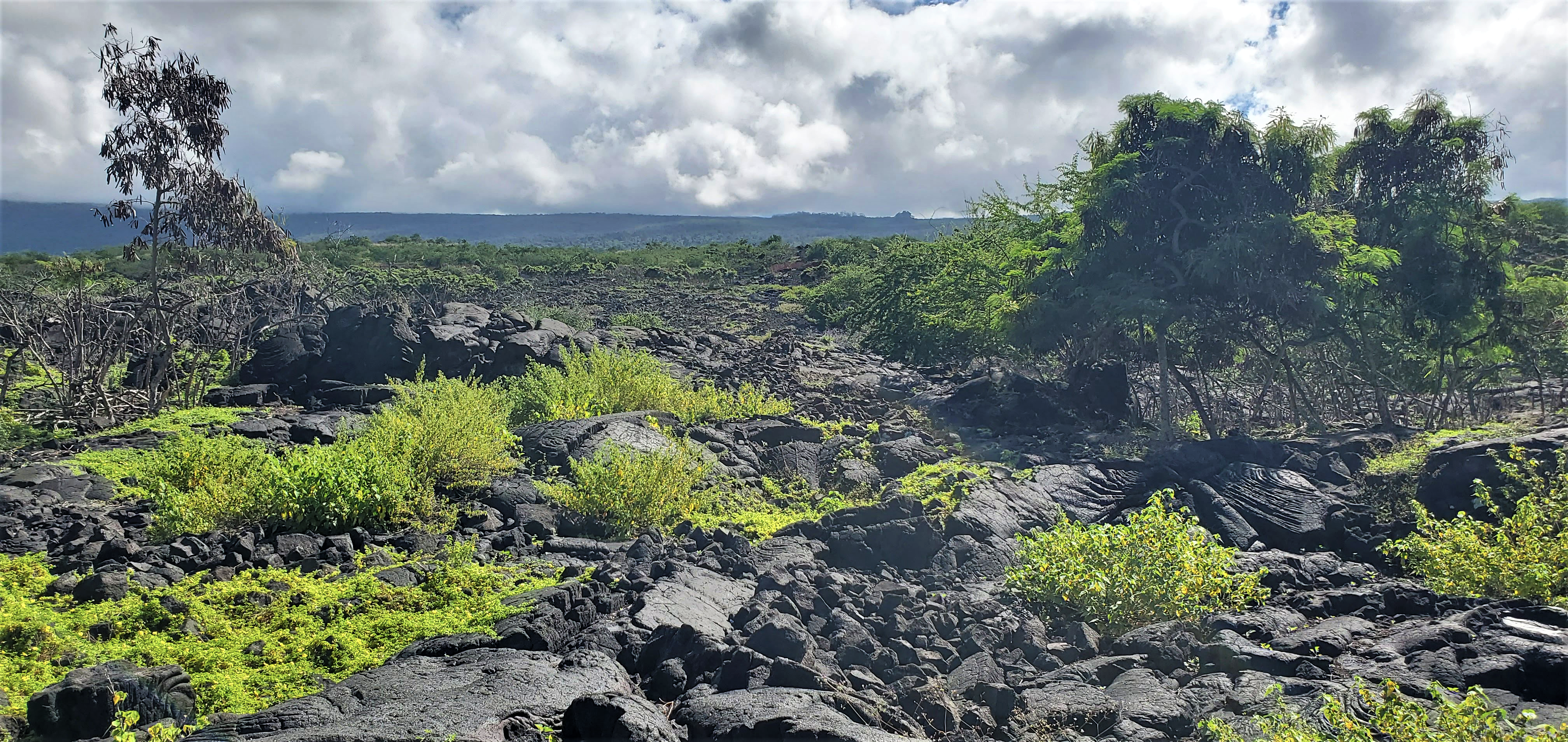
F - Animal PenThis high-walled animal pen is indicative of changing times when goats where introduced to the island. 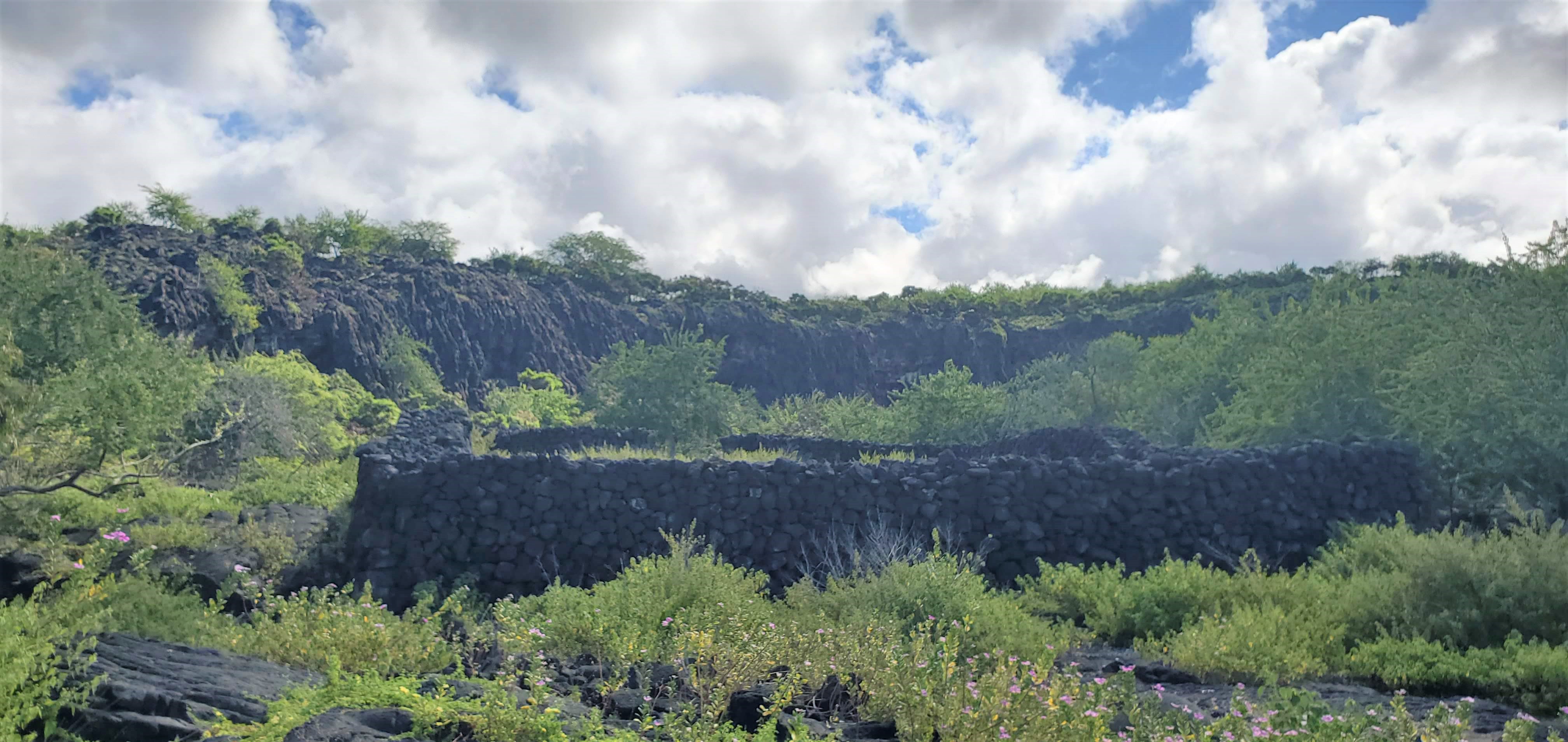
G - Alahaka Heiau & Keanaeʻe CliffsA large pile of stone rubble is all that remains of this once impressive heiau (temple) with natural amphitheater of lava cliffs behind. 
H - Alahaka RampSee the Alahaka Ramp on the 1871 Trail section of the Ala Kahakai National Historic Trail. Imagine trying to scale this 20-foot cliffside without the improvement of this constructed stone ramp! 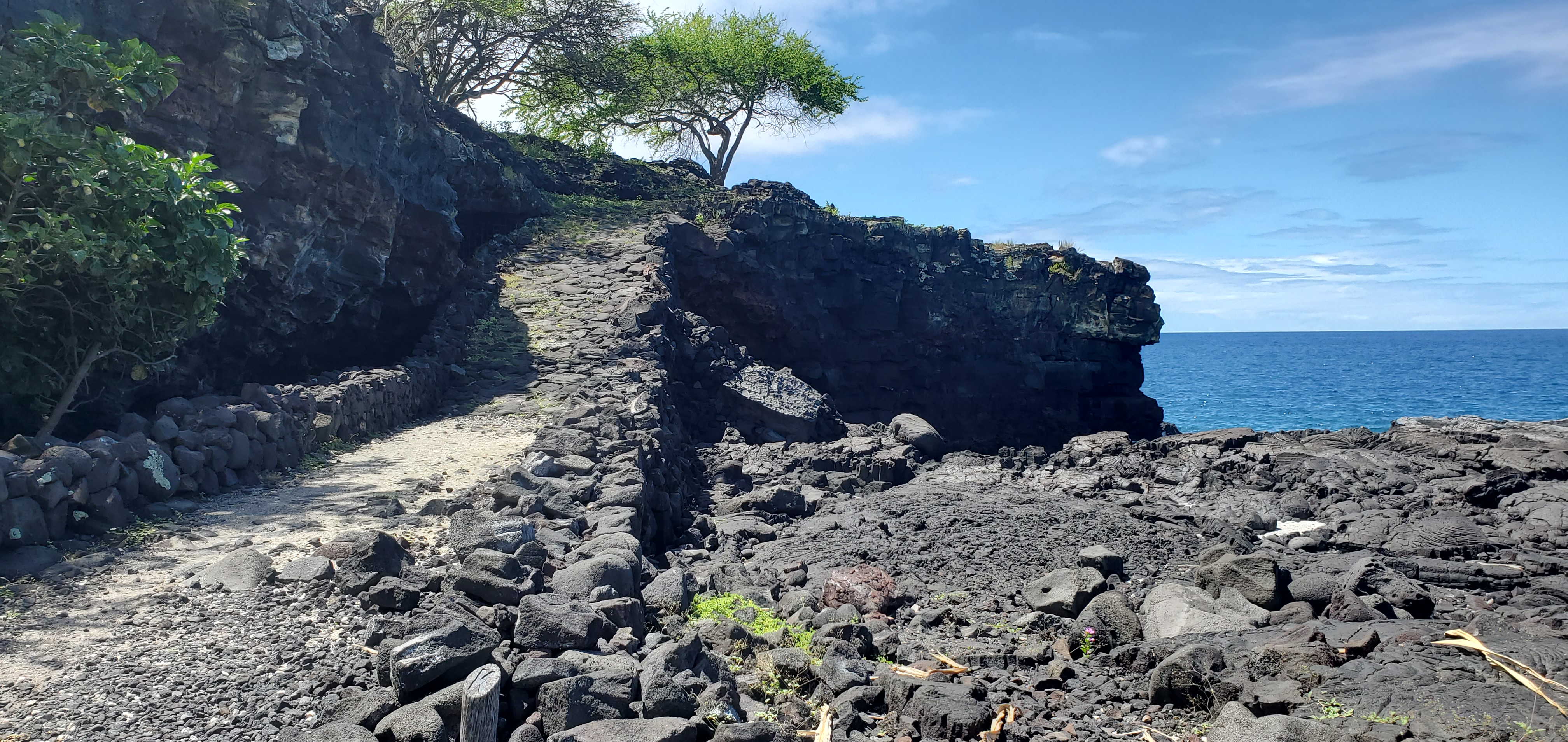
Hawaiian History Interpretive Wall ExhibitLearn about the intense history of Hawaiian culture from the first Polynesian voyagers to the end of the kapu system with this blended audio story and artistic mural. 
I - Waiū o Hina Lava TubeThe Waiū o Hina lava tube was formed by molten lava flowing from Mauna Loa, the largest active volcano on earth. 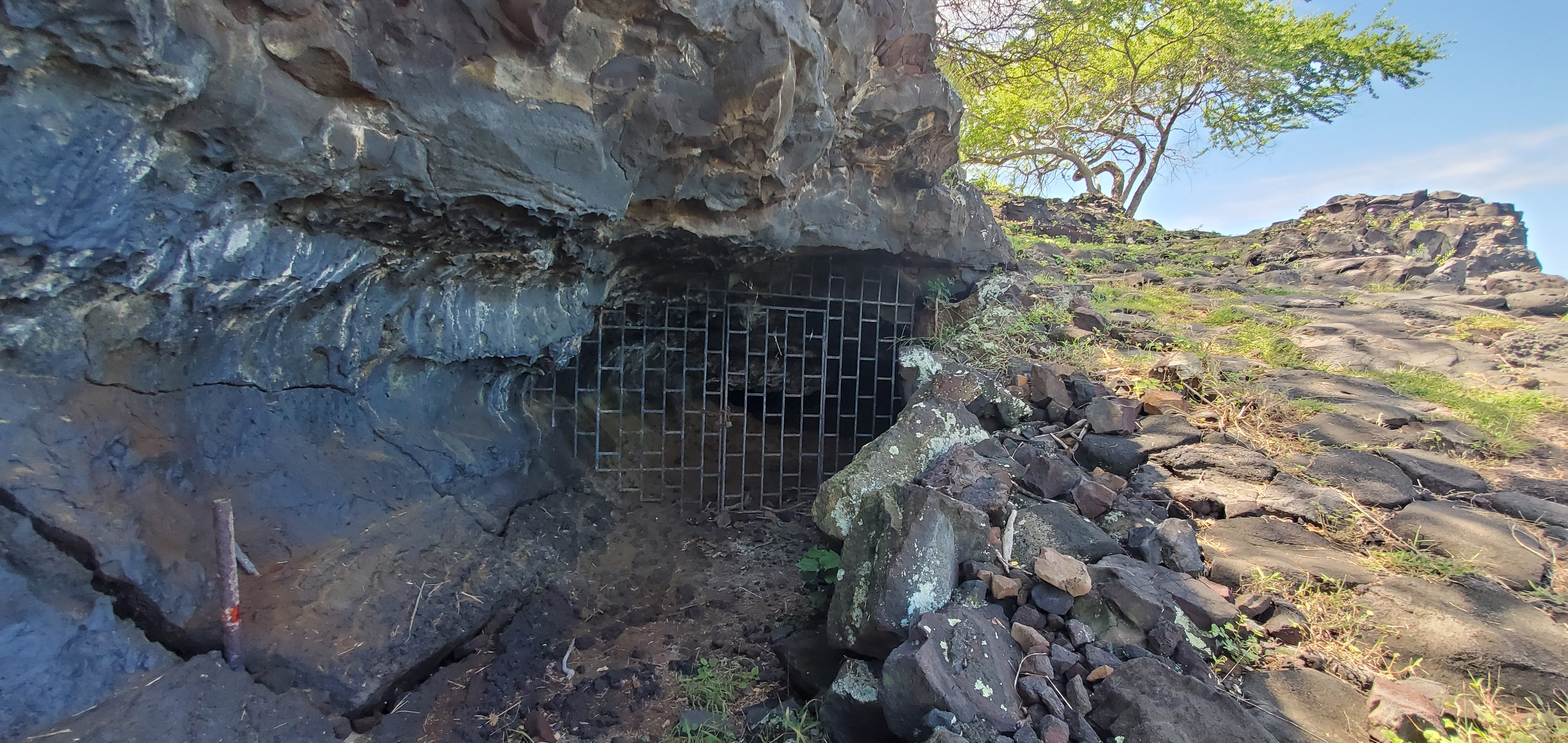
Inner Court Kiʻi at Hale o KeaweThe kiʻi images found within the inner court of Hale o Keawe are the focal point of the heiau (temple). These images are all forms of Lono that represent the various functions of the Puʻuhonua. Learn about which forms of Lono these images represent. 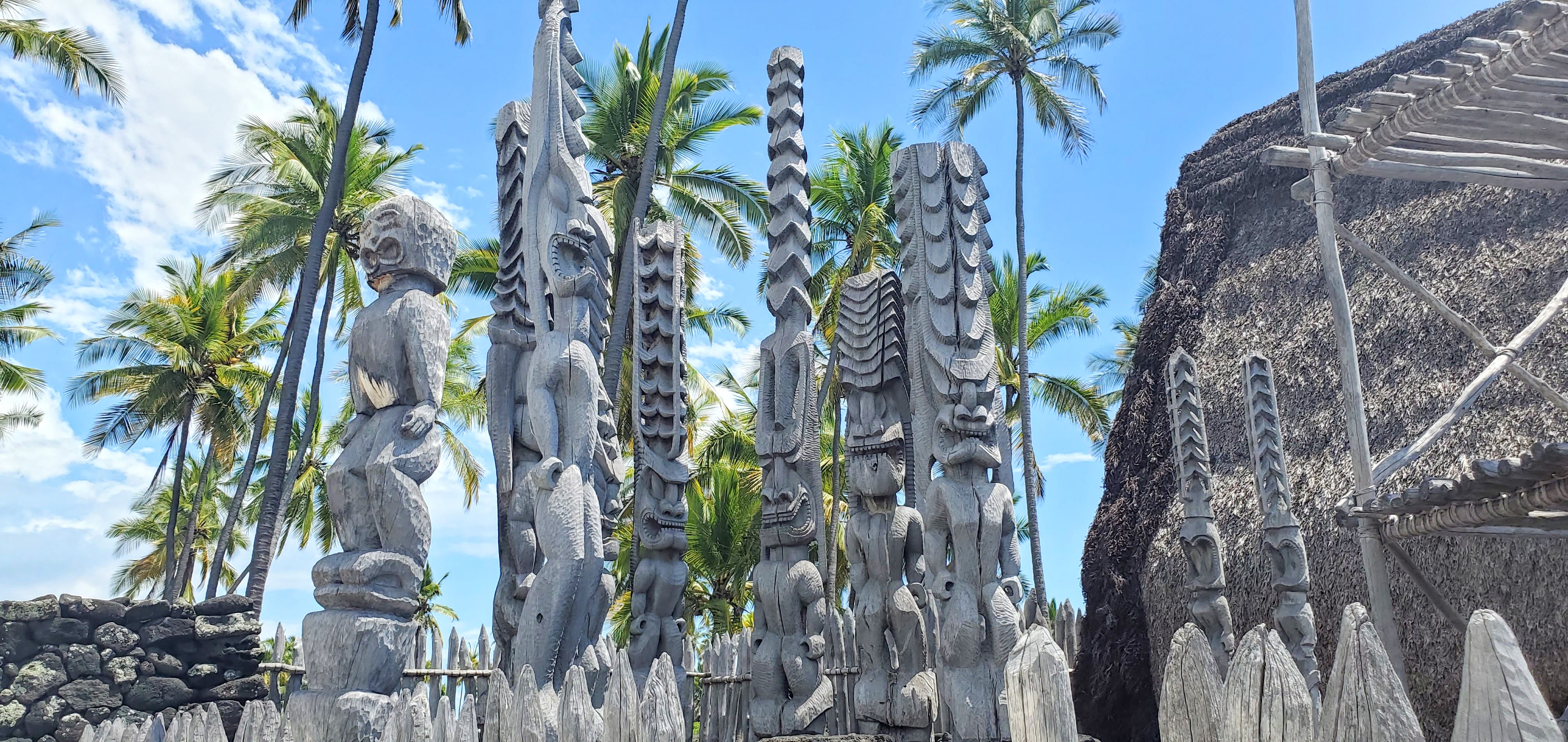
J - Shoreline Viewpoint on the 1871 TrailA gorgeous view of the expansive South Kona coastline and Keanaeʻe Cliffs awaits those who make the trek out to the top of the Alahaka Ramp on the 1871 Trail. 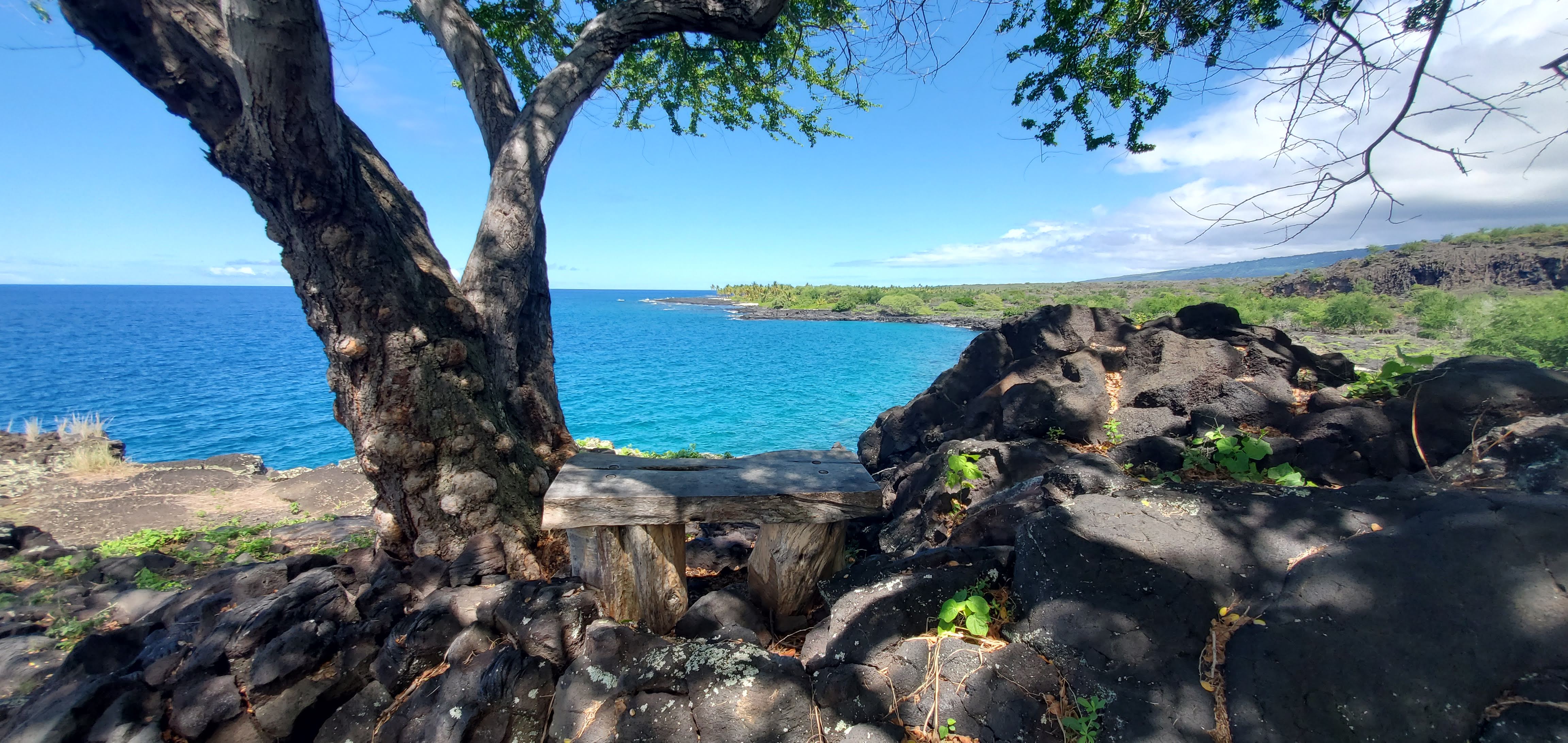
Junction of the 1871 Trail & Coastal TrailThe junction with the Coastal Trail allows you to take this shoreline route to the Picnic Area. 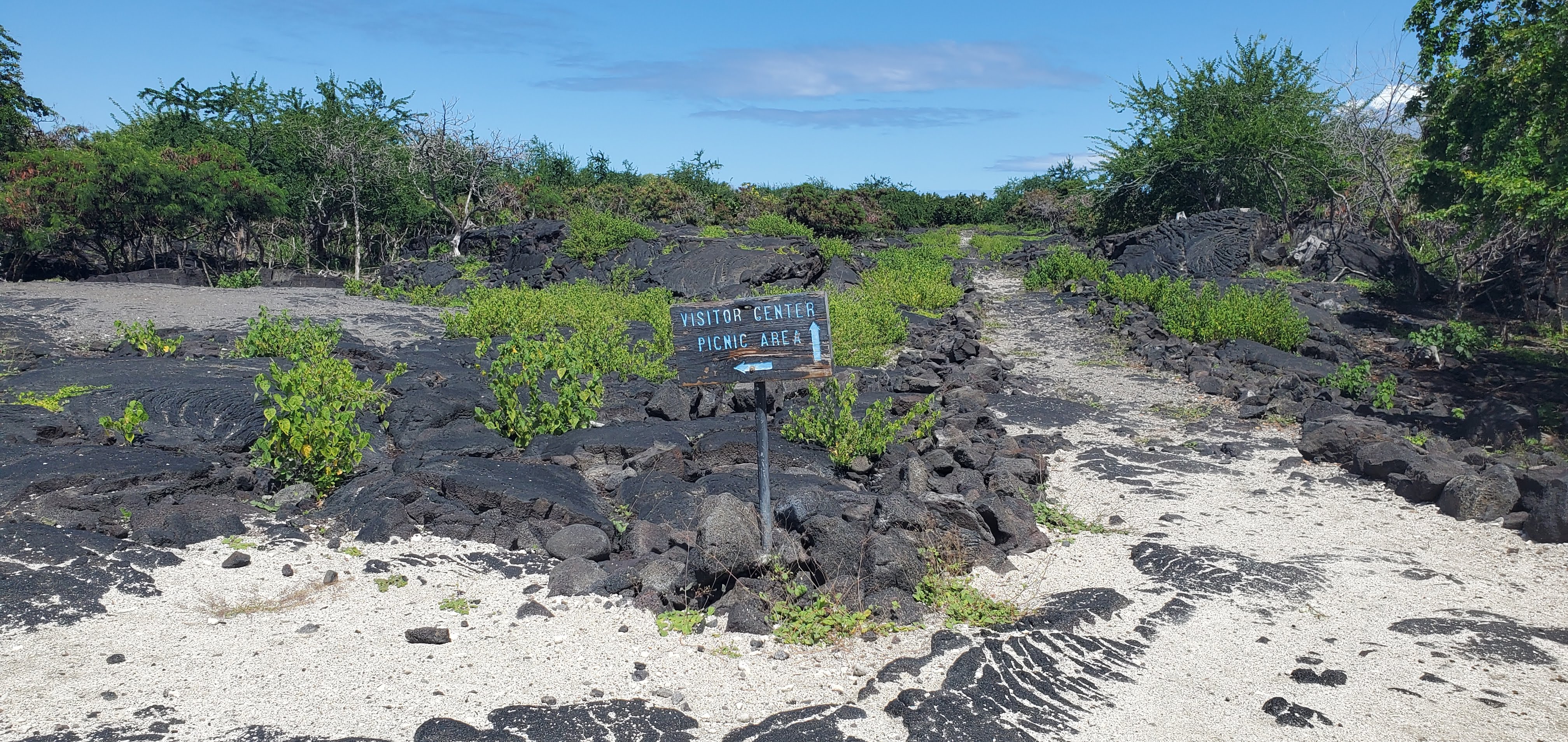
K - ʻĀhinahina Point - John Ahu ComplexThe John Ahu House Complex at ʻĀhinahina point shows a prime location for housing in the late 1800s to early 1900s. 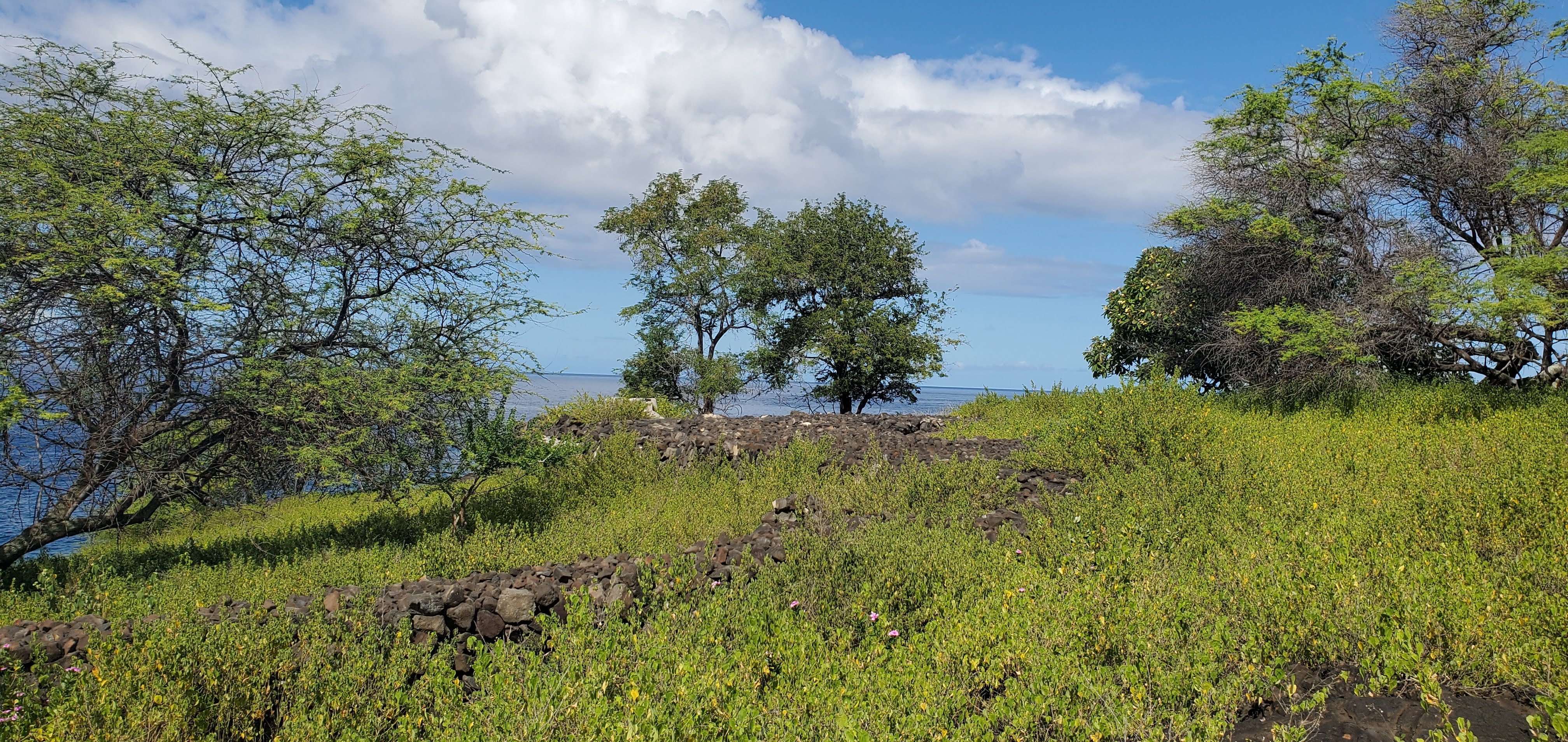
Kiei & HālōThis iconic pair represents the akua (gods) Kāne (Kiei) and Kanaloa (Hālō), two of the four major akua in the Hawaiian pantheon. Throughout Polynesia, Kāne and Kanaloa are acknowledged as the gods of creation and life. The pair is represented twice at Hale o Keawe; in their iconic setting looking across Hōnaunau bay, and again immediately outside of the entrance to the inner precinct of the temple. 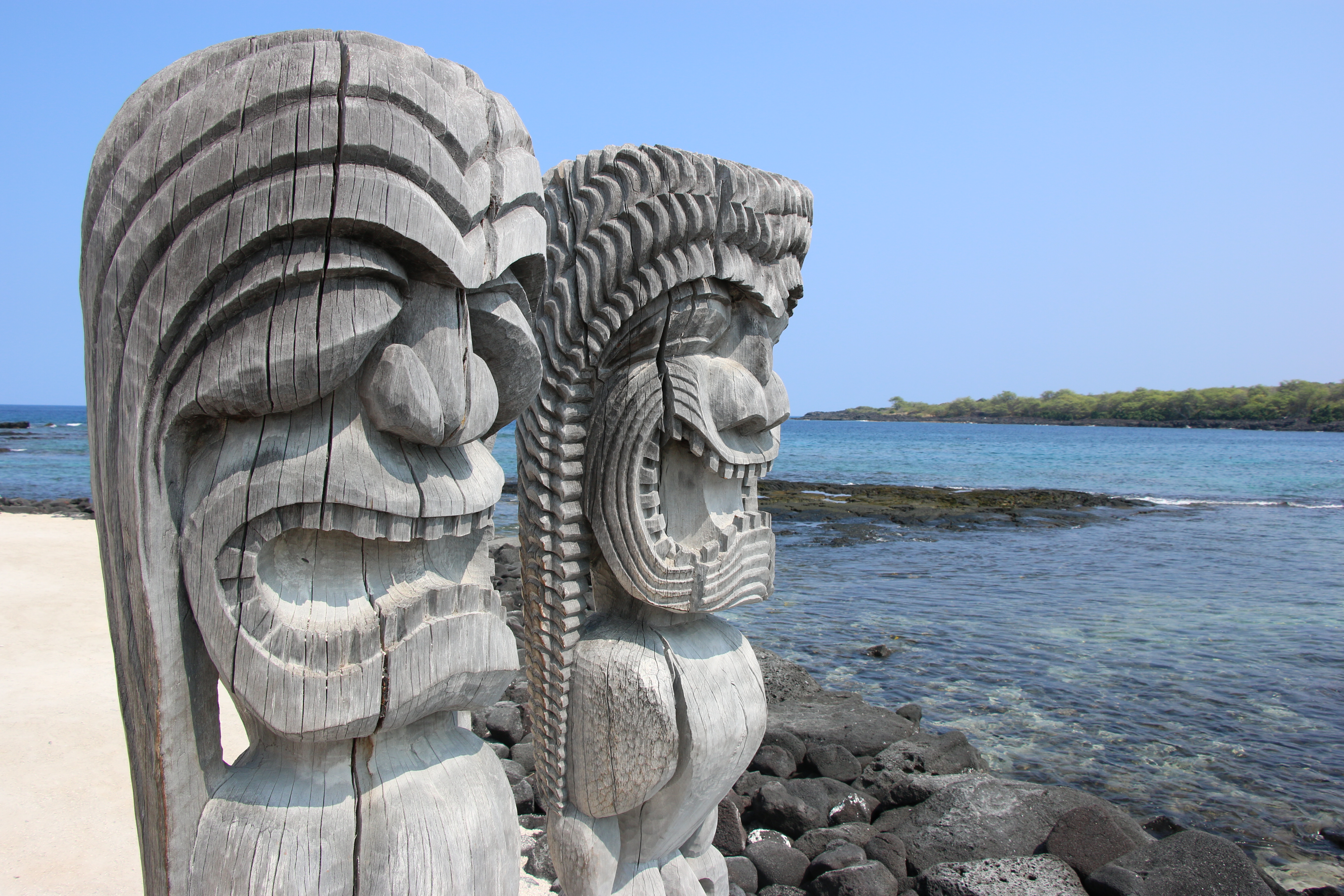
Kū-i-ke-ālaiAn image of great importance at the heiau, Kū-i-ke-ālai is "the one who guards the way" and a protector of the heiau. Crucial to the ceremonial function of the heiau, Kū-i-ke-ālai ensures that the sacred confines of Hale o Keawe are not breached; what belongs outside the heiau does not enter, and that which must remain in the heiau does not encroach on the outside world. Kū-i-ke-ālai is one particular aspect of the akua Kū, one of the four major gods in the Hawaiian pantheon. 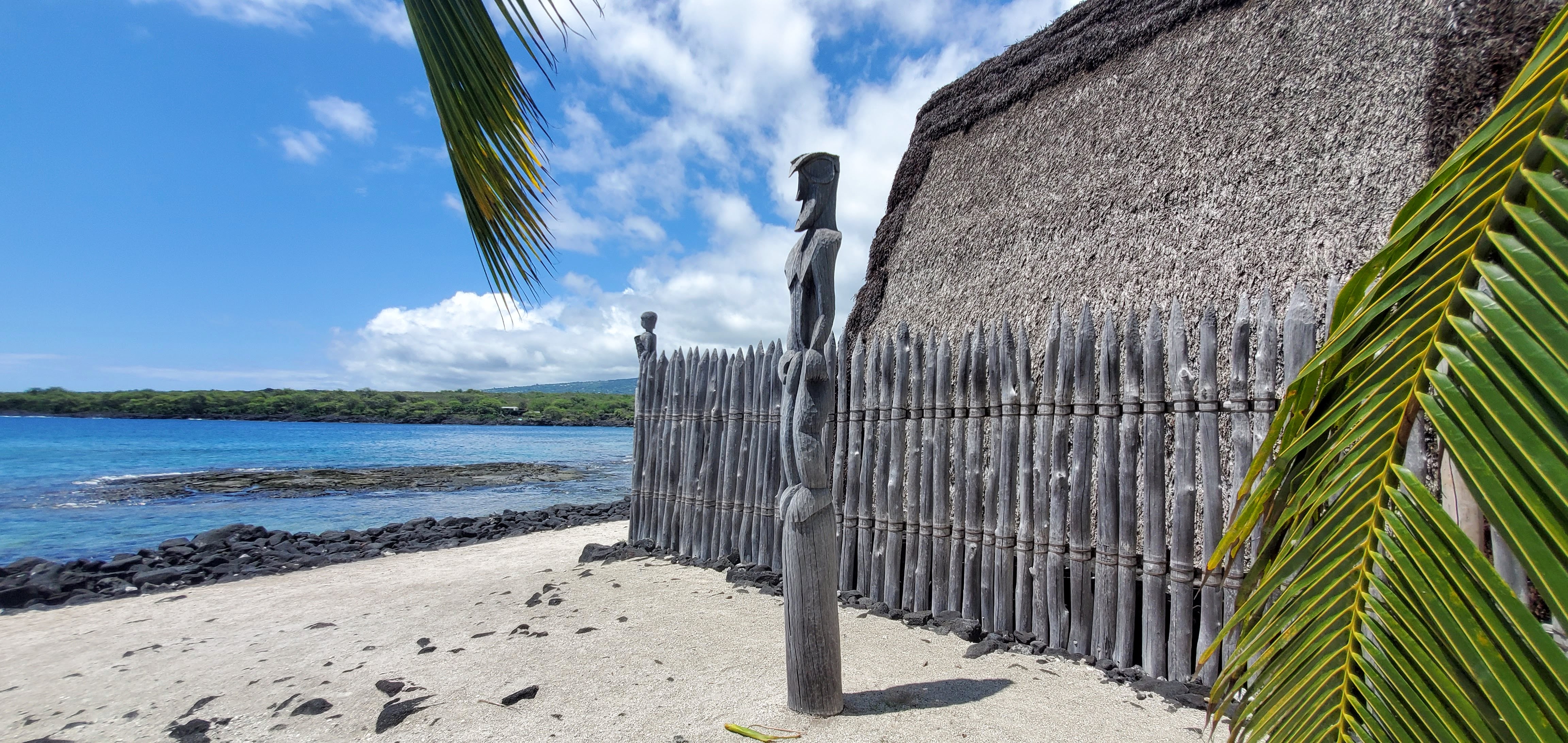
Kū-ka-ʻilimokuA guardian god of governance and warfare, Kū-kaʽilimoku was a patron deity of the ruling aliʽi on the island of Hawaiʽi. See this carved kiʻi in the Royal Grounds near the kōnane papamū (playing surface). 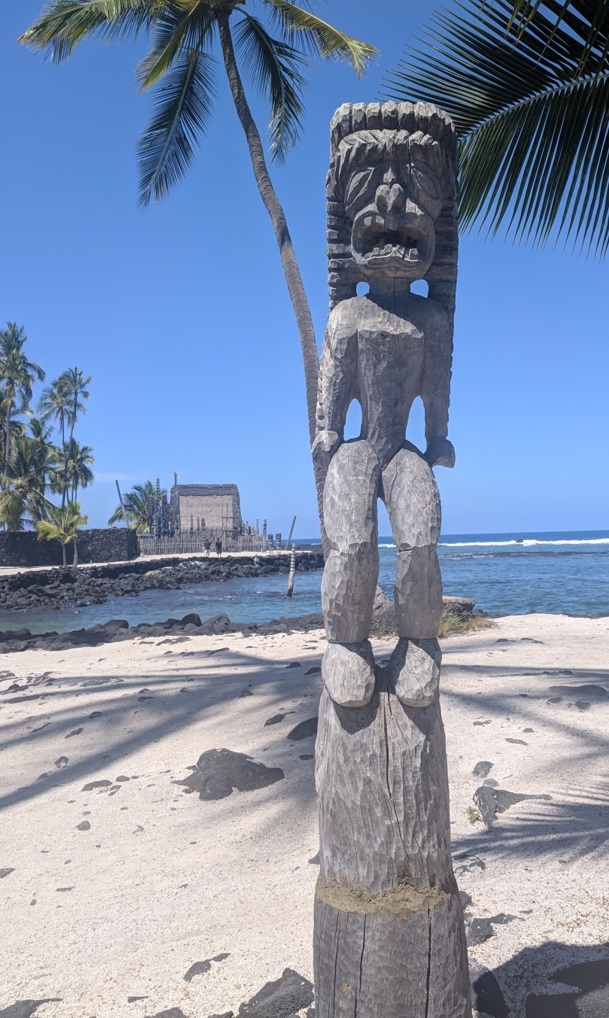
L - Kiʻilae VillageKiʻilae Village offers a glimpse into the past, when Hawaiʻi was changing rapidly, but still supported traditional aspects of daily life. 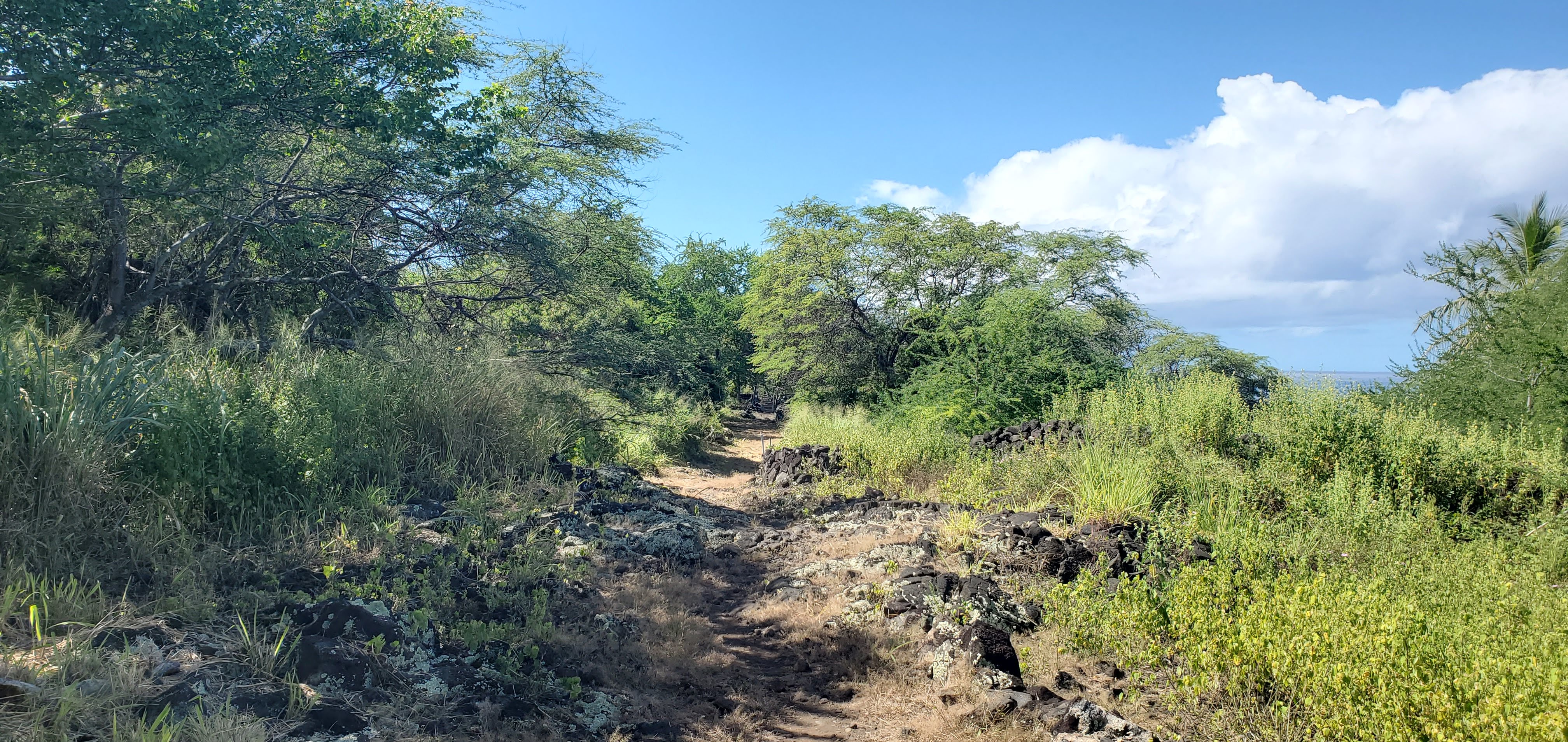
Lono-o-makahikiLono-o-Makakhiki is one particular aspect of the god Lono – one of four major deities in the Hawaiian pantheon. The god Lono is associated with agriculture, rain, storms, fertility, peace and more. Associated with the passage of time, Lono-o-makakhiki is not to be confused with Lono-i-ka-Makahiki, a patron god of the annual Makahiki festival on the island of Hawaiʽi. 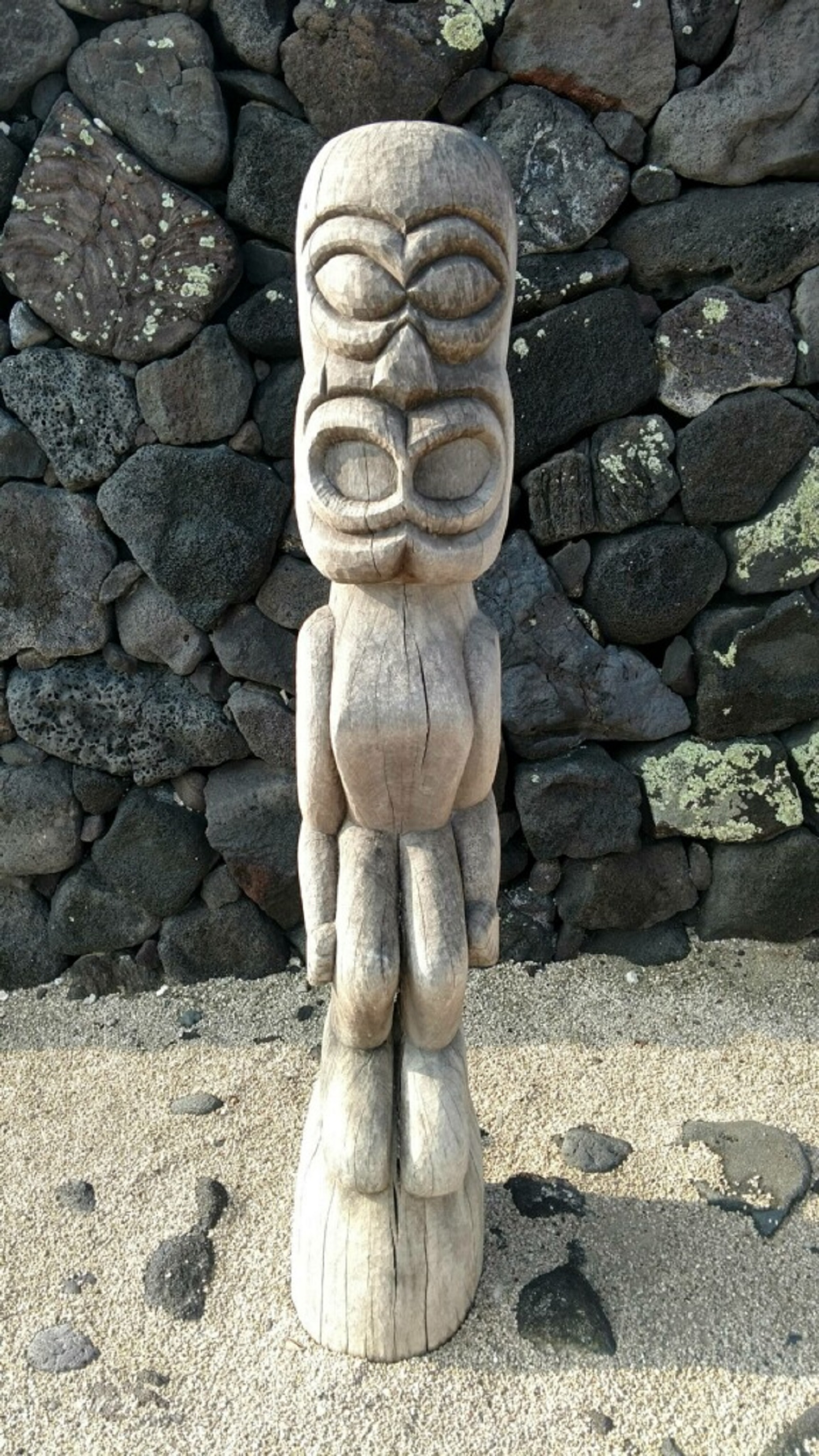
Lono-ʻilikaiLono-ʽilikai, or “Lono-on-the-surface-of-the-sea,” stands directly over the area where the land and the ocean meet. In this location, Lono-ʽilikai watches over those arriving by way of the sea. 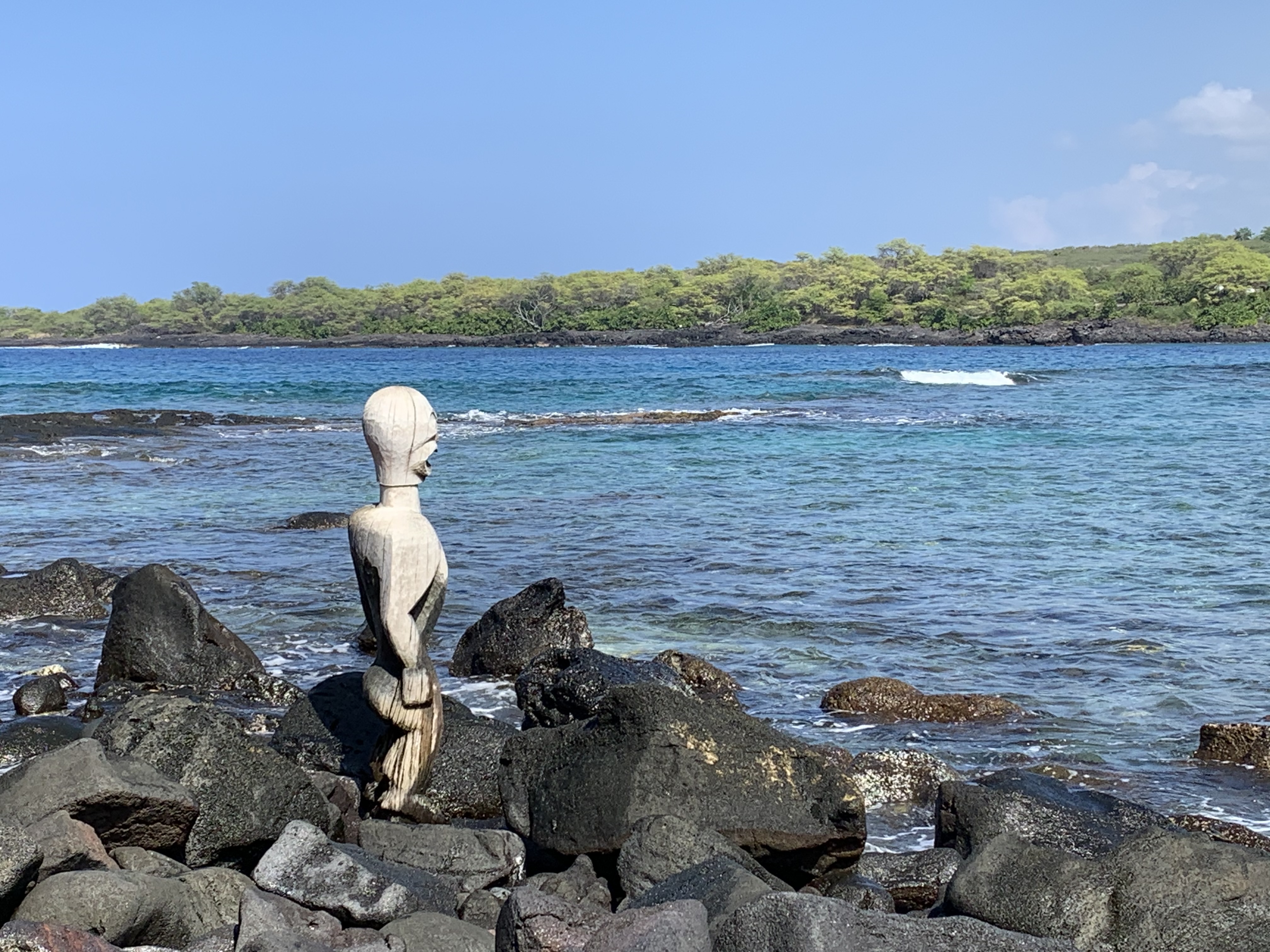
M - Kahikina House SiteThis house site was the home of the Kahikina family who were expert fishermen. 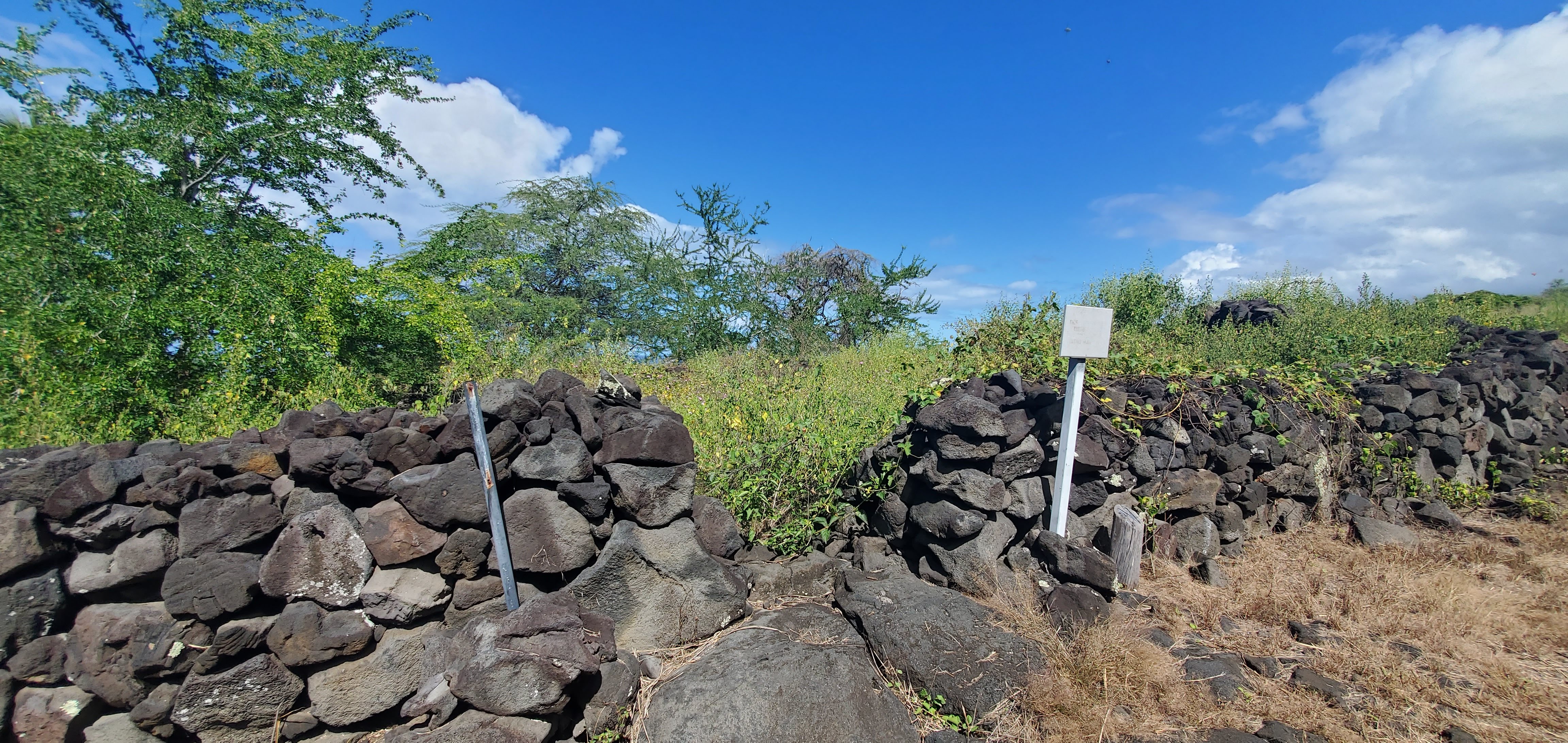
Meet the Kiʻi Introduction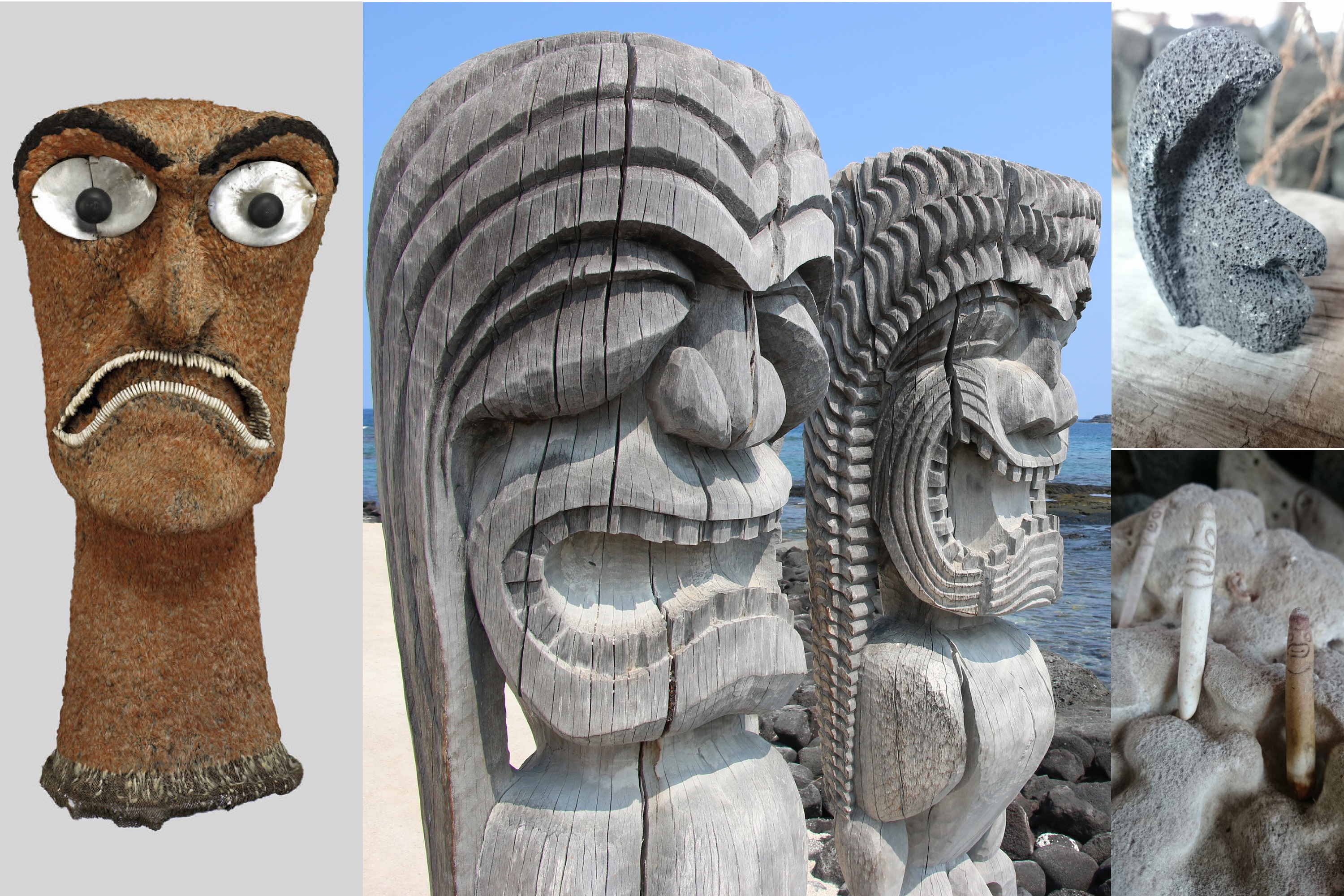
Mural I- The Voyagers
Mural II, III, IV- Ke Ali'i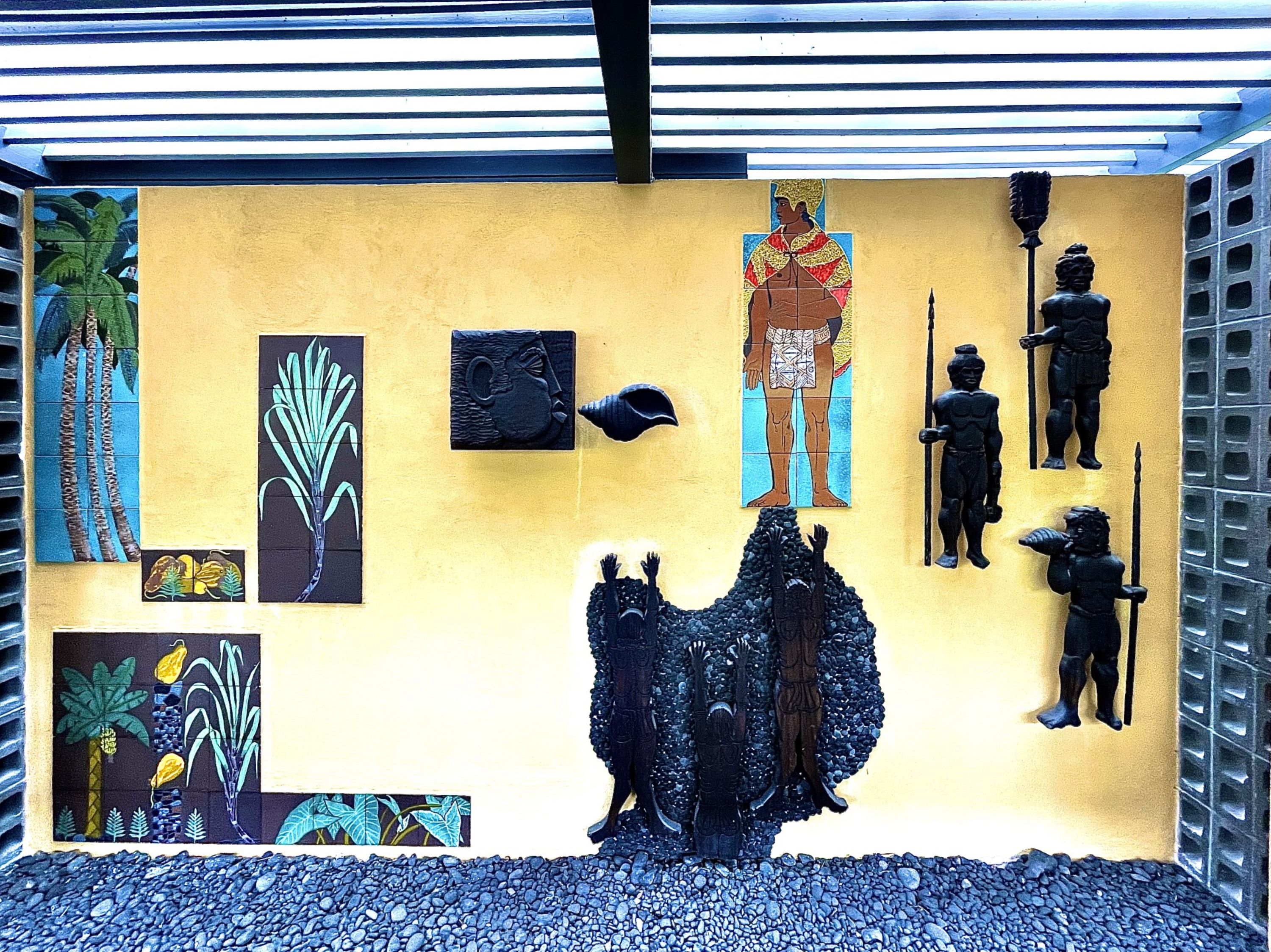
Mural V - Pu'uhonua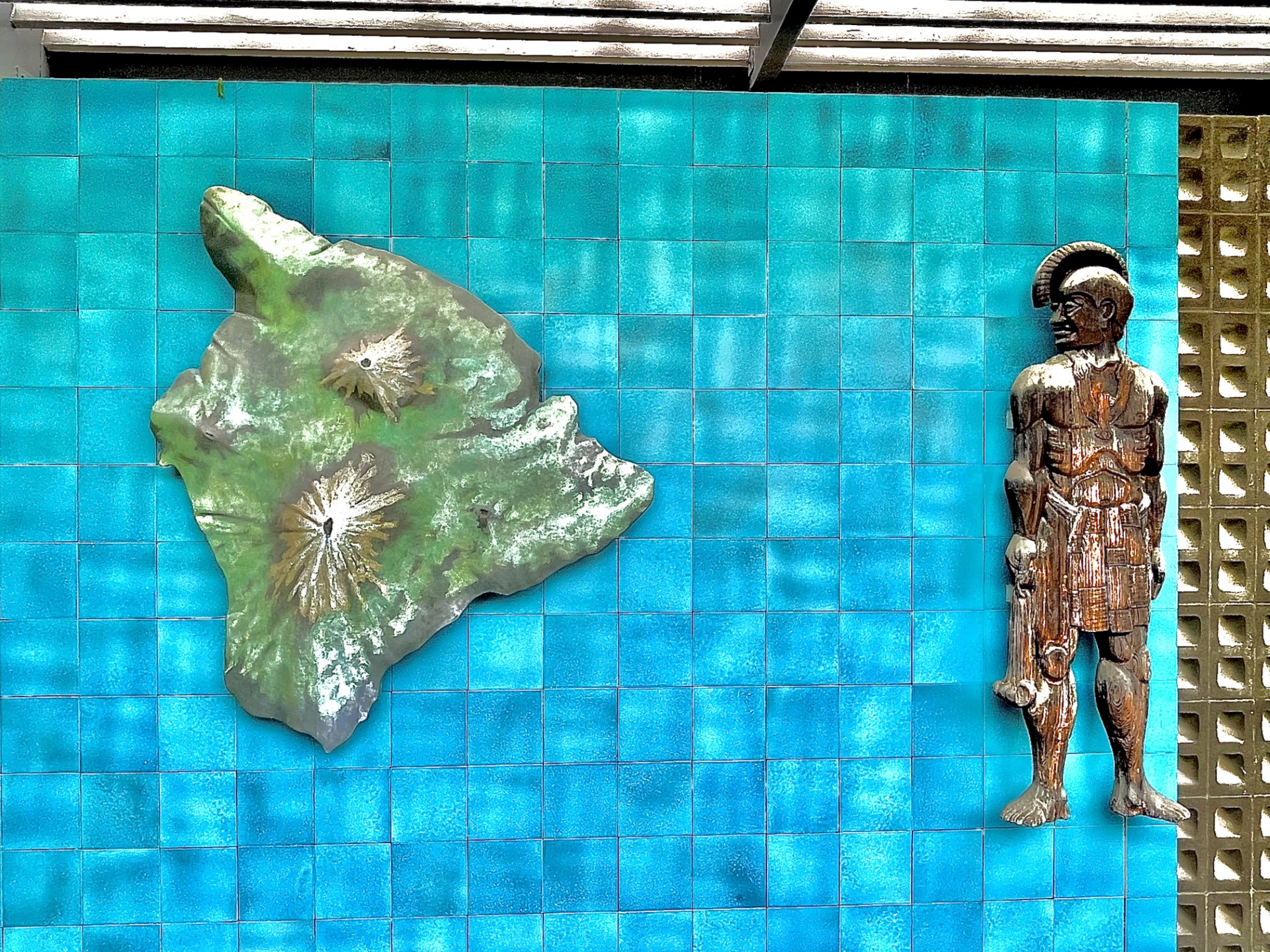
N - Mauka-Makai TrailThis old mauka-makai trail connected Ki'ilae villagers with upland gardens. 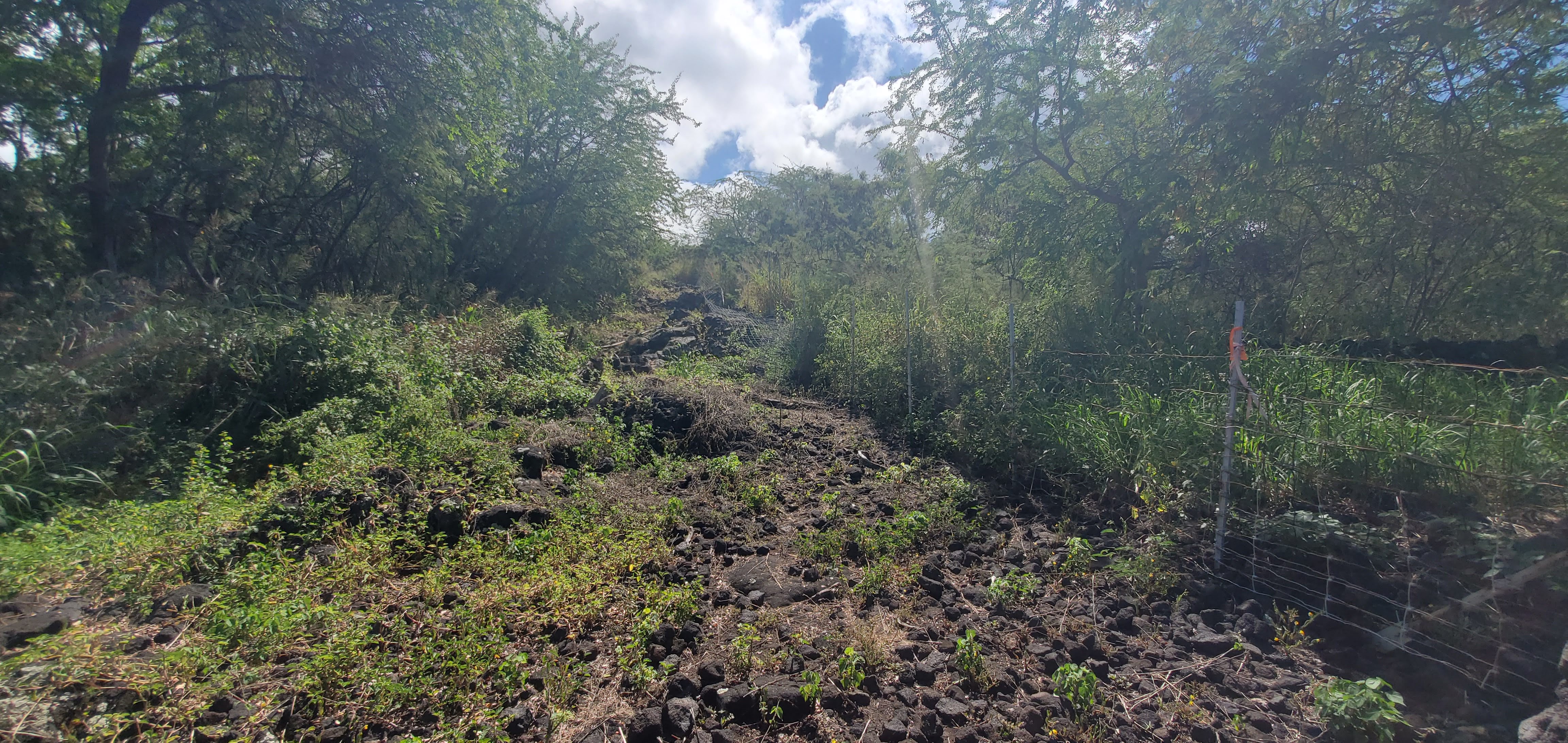
O - Pā HaleThe pa hale (house sites) of Ki'ilae village show a more traditional way of life. 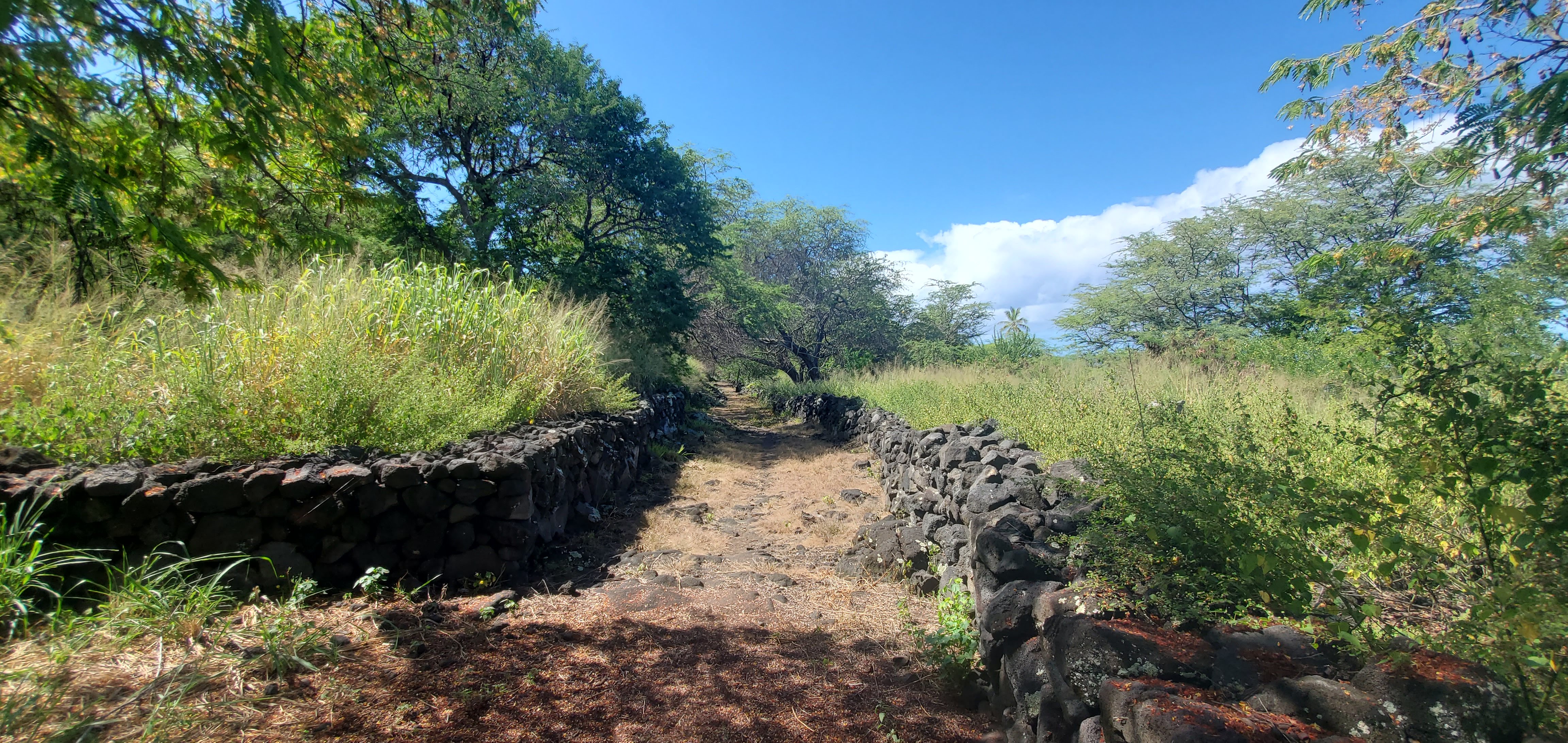
Puʻuhonua o Hōnaunau National Historical Park Entrance StationThe entrance station at Puʻuhonua o Hōnaunau National Historical Park is an essential starting point for any park visit and is where you are required to purchase an entrance pass or present an existing pass to gain access to the park. 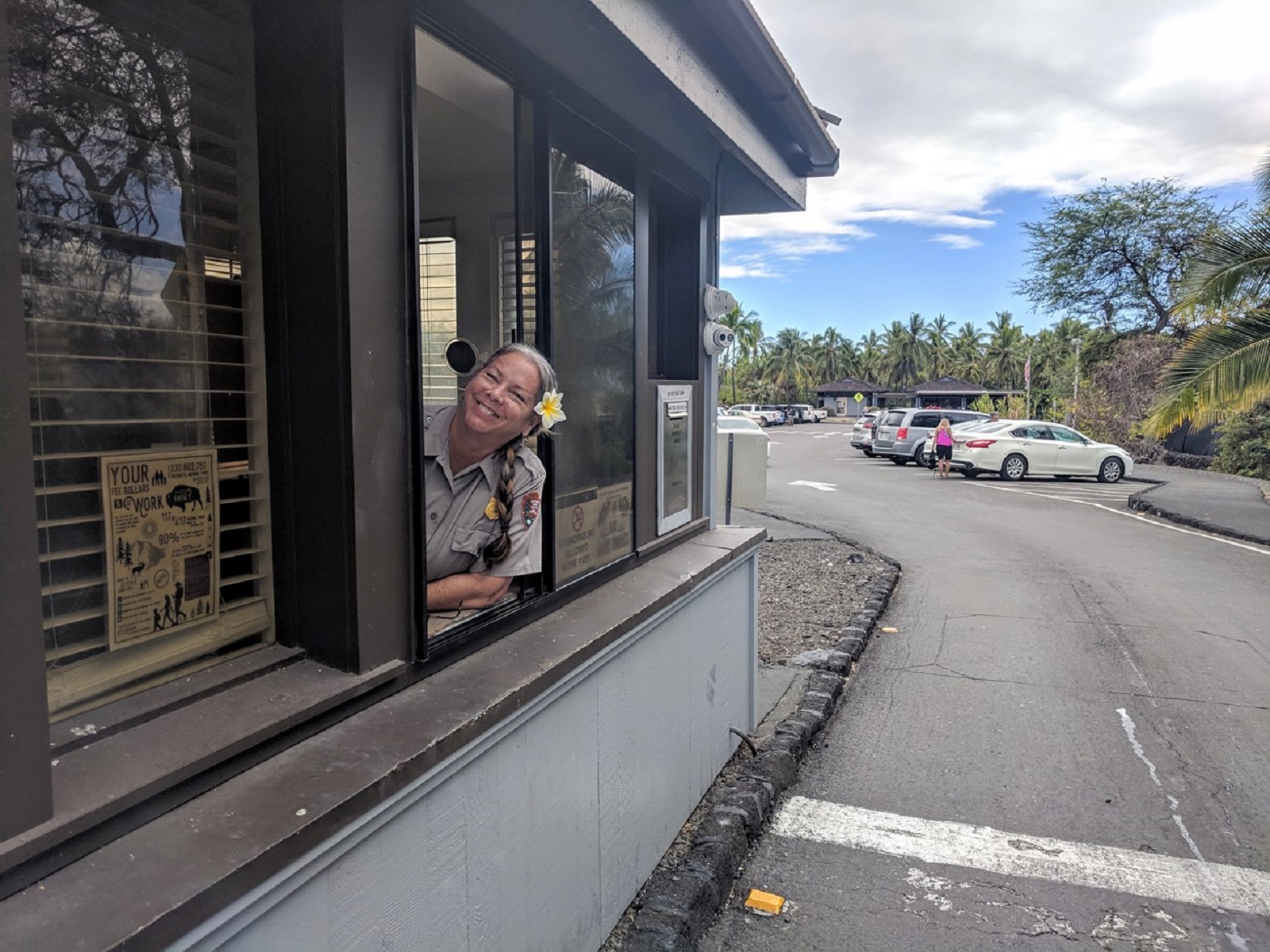
Puʻuhonua o Hōnaunau Picnic AreaCoconut trees, ocean views, tide pools, and more! The picnic area is a favorite destination for locals and visitors alike. Located south of the Great Wall, the picnic area is a fantastic place to relax, have a beach picnic, explore the tide pools in the lava rock, and experience the iconic South Kona coast. 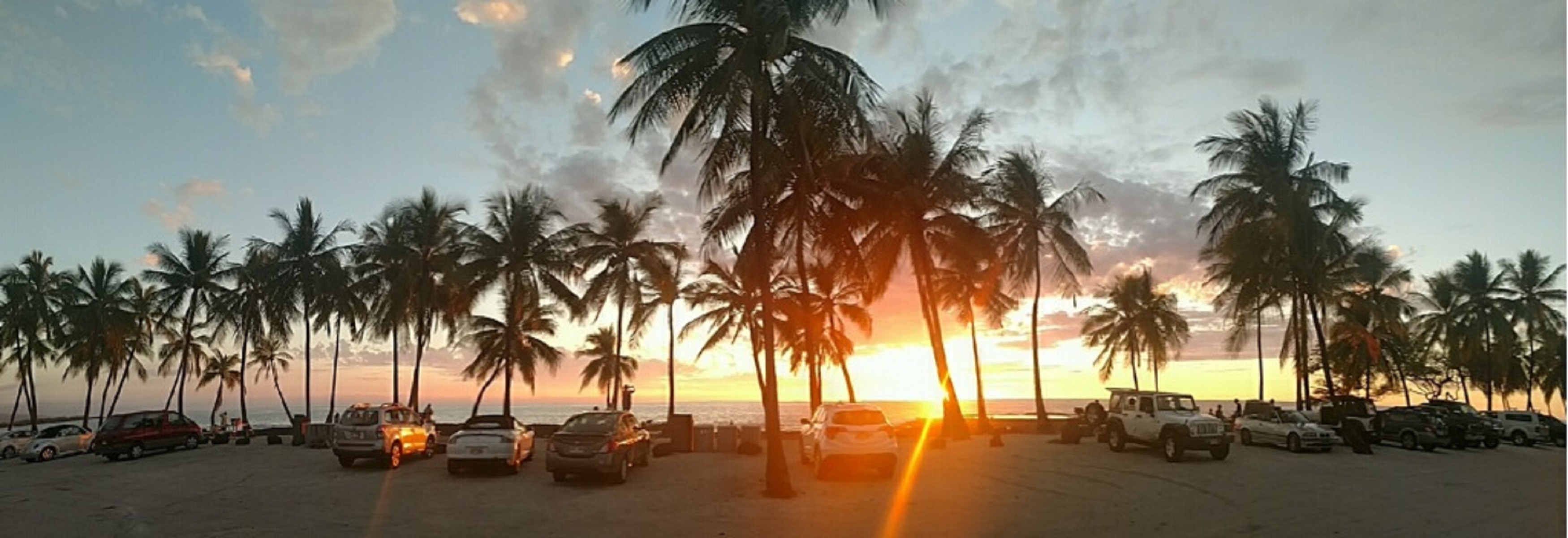
The Coastal Trail TrailheadFeel the sand beneath your feet, hear the wind rustle coconut fronds, and see ocean waves break on the rocky lava shore. This short connector trail takes you along the sandy coast then turn mauka (towards the mountain) to connect with the longer 1871 Trail. 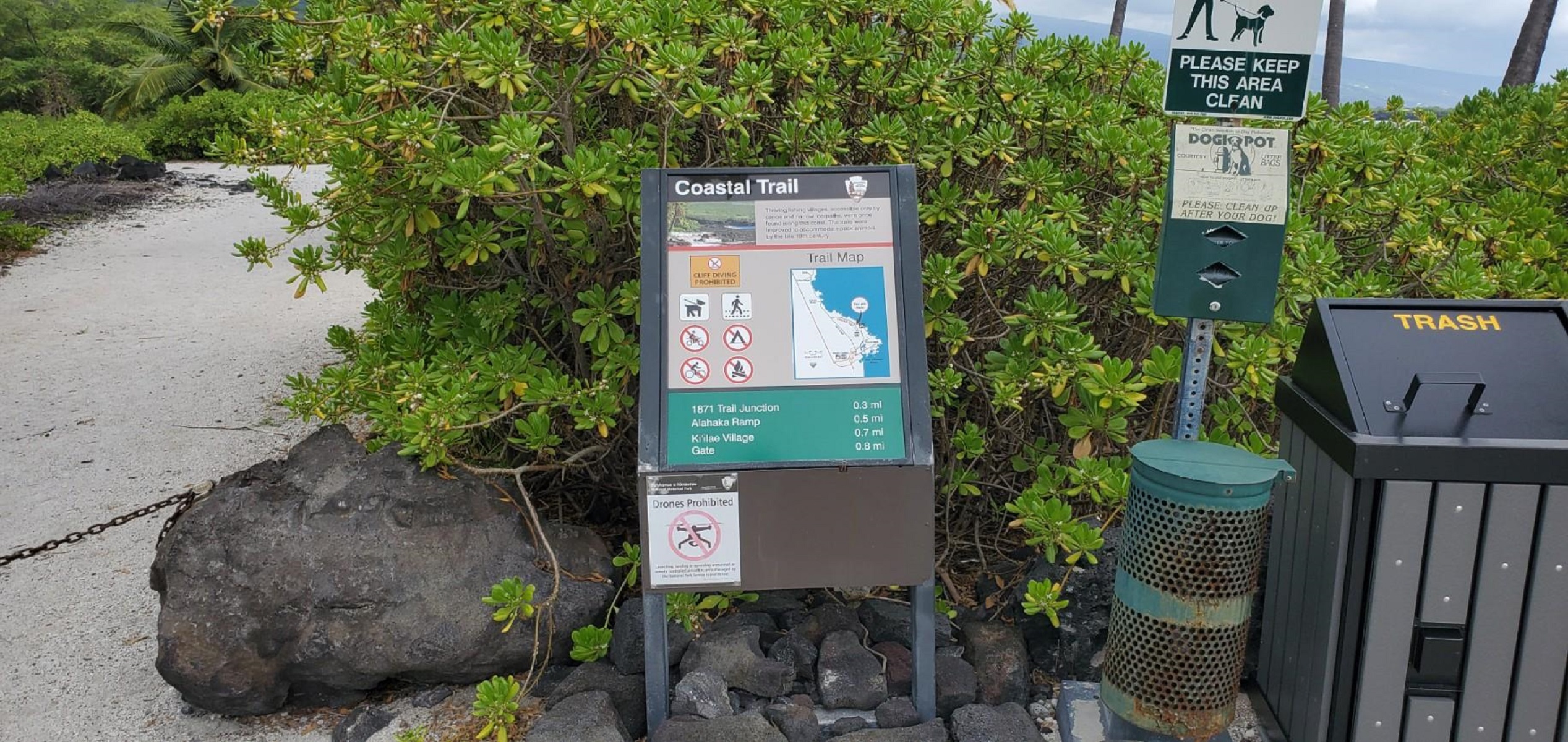
|
| Visitor Centers | Count: 1
Puʻuhonua o Hōnaunau National Historical Park Visitor Center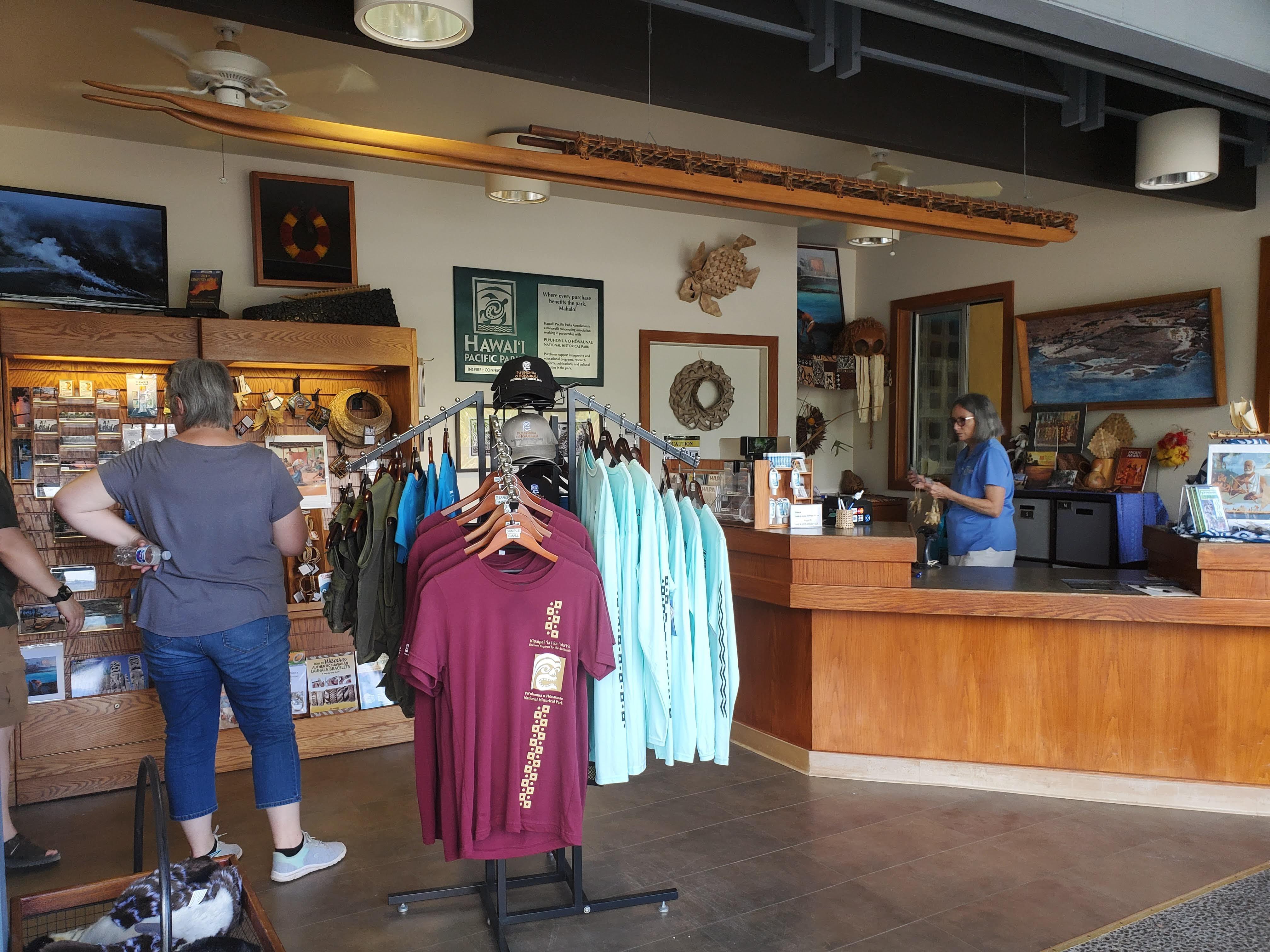
|
| Things to do | Count: 9


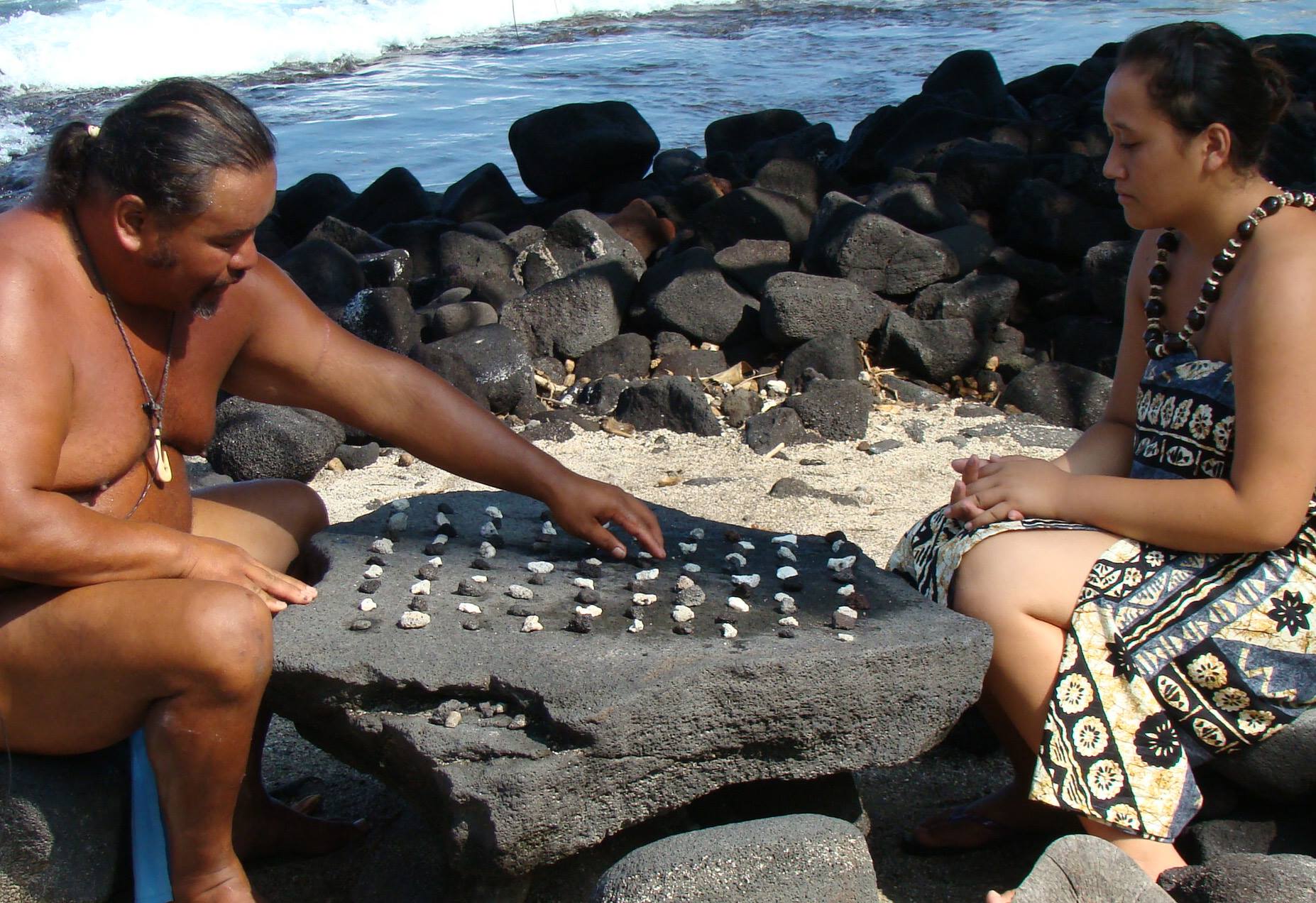
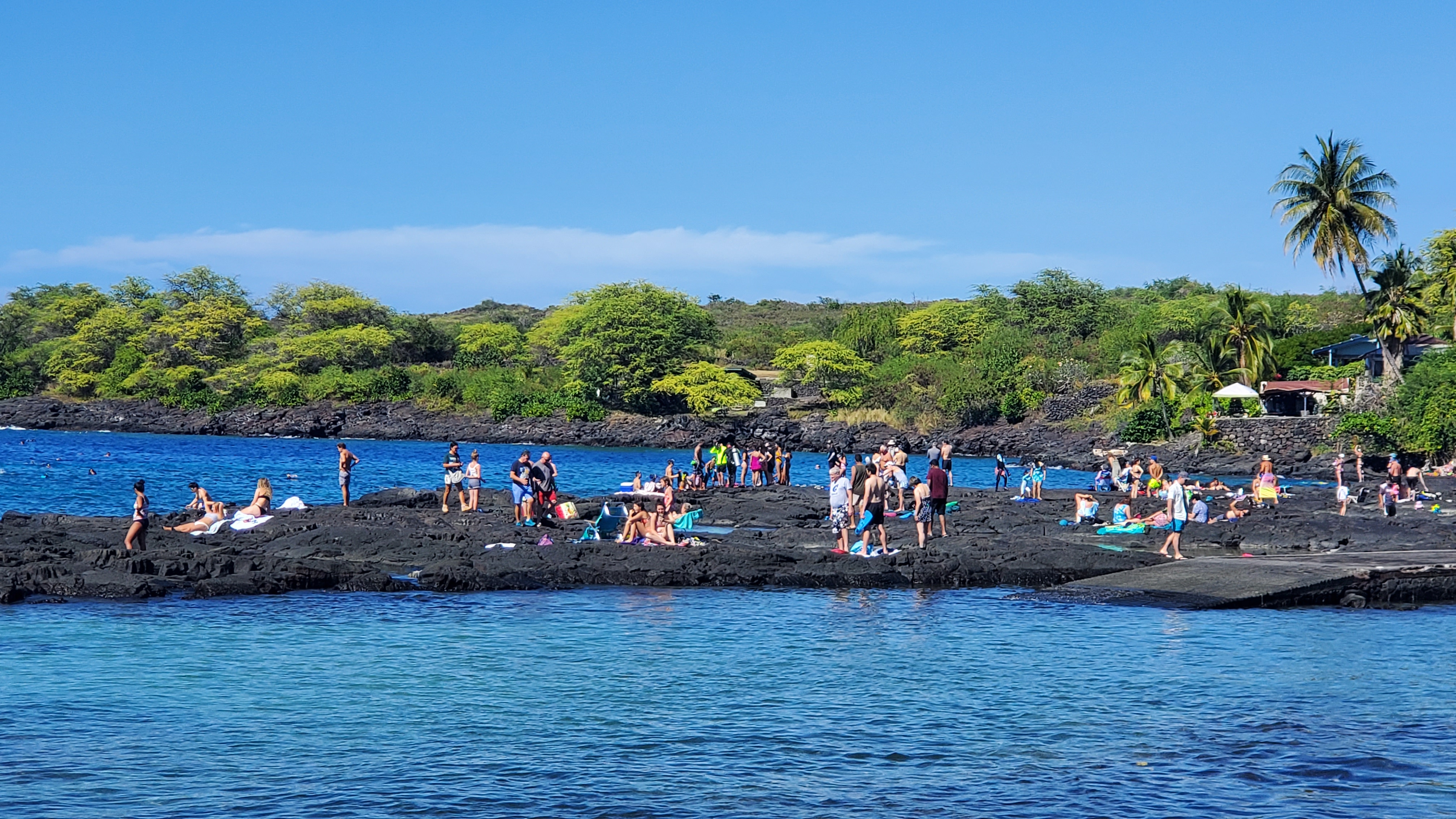
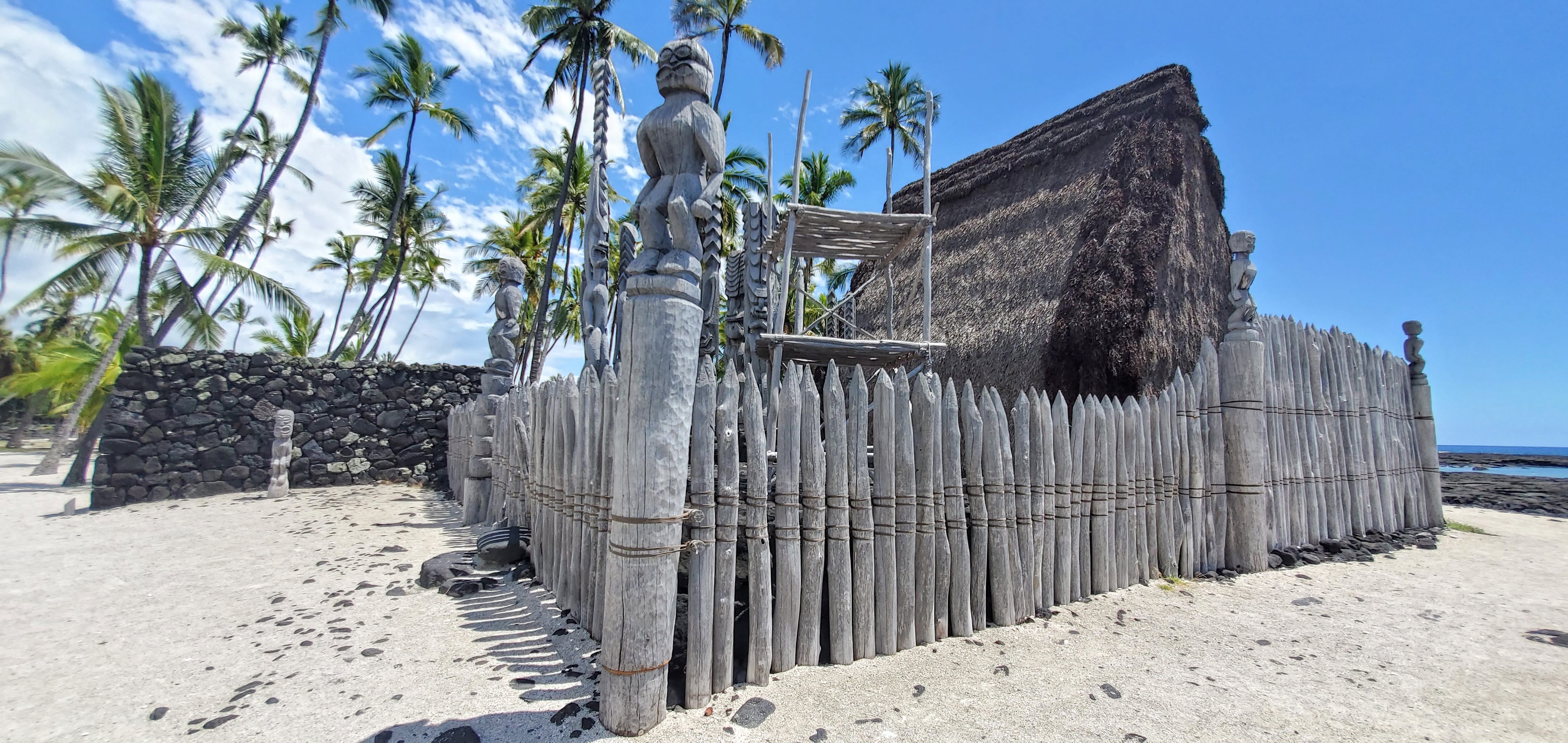
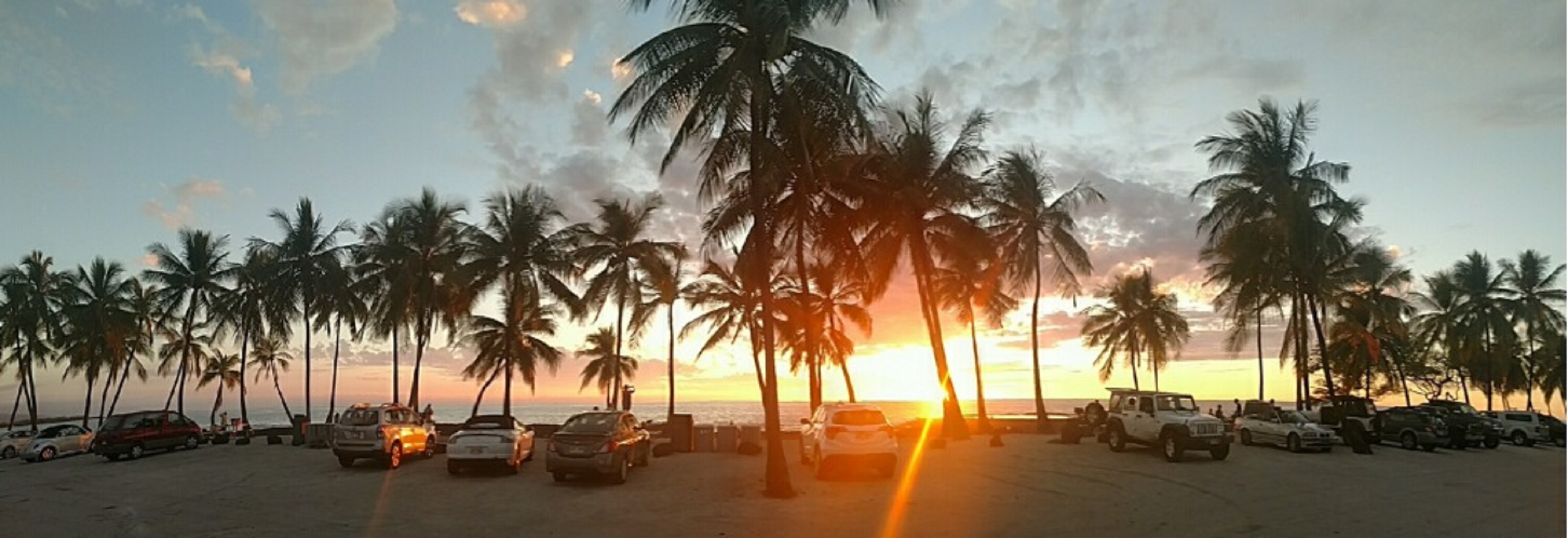
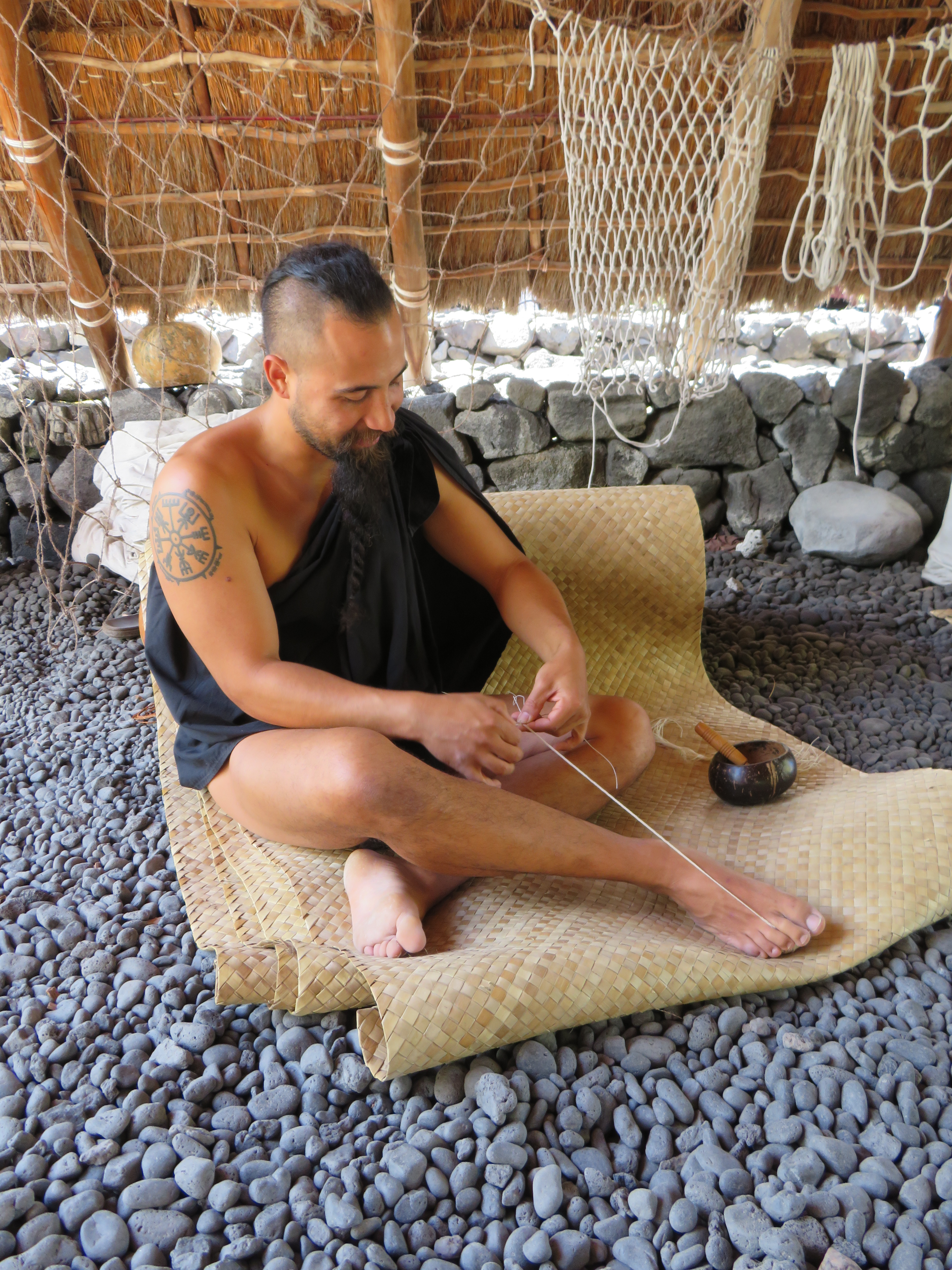
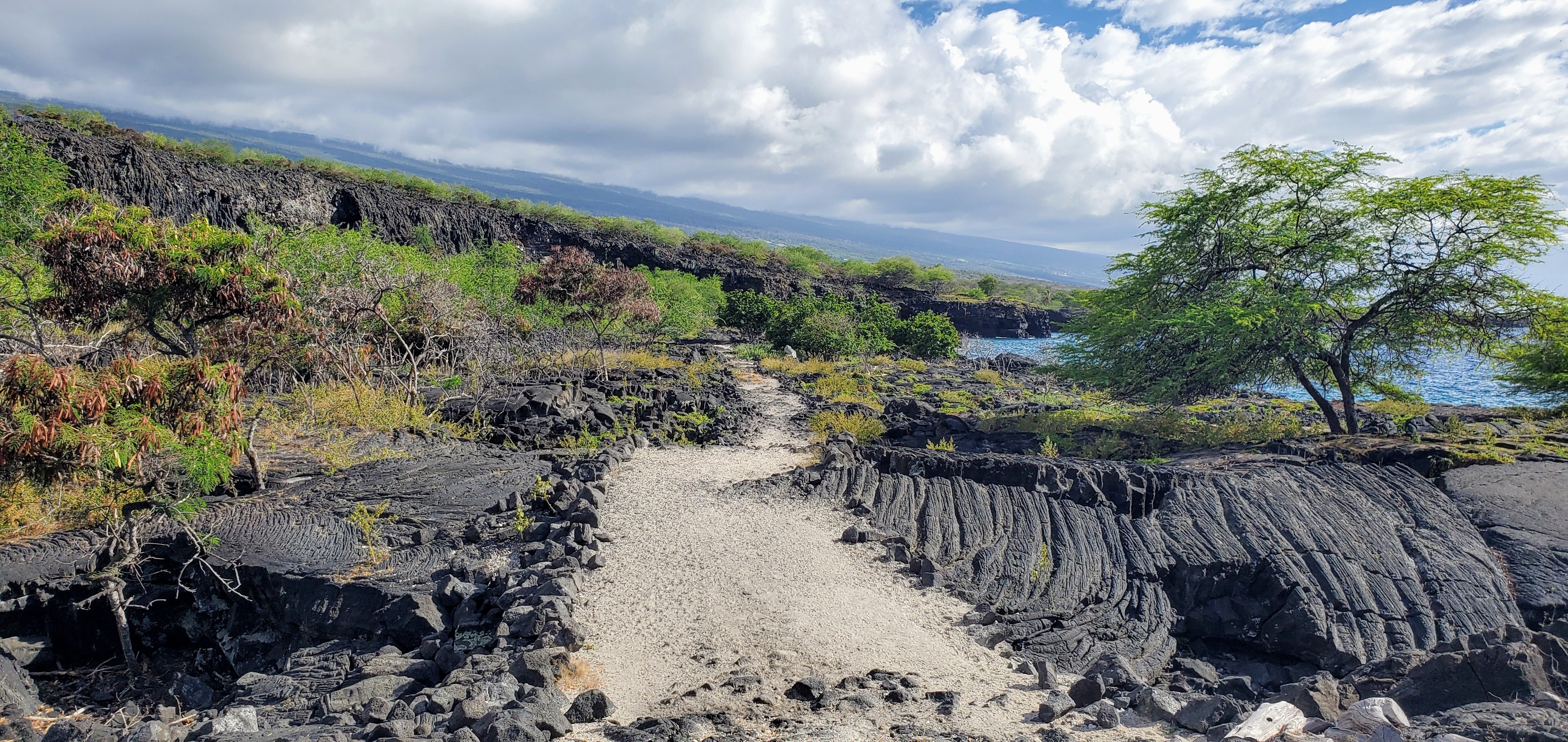

|
| Tours |
Count: 4
1871 Trail Tour to KiʻilaeSee the convergence of ancient and historical times as you step back in time with us, walk in the footsteps of the ancestors, and explore the rugged lava shoreline of the South Kona Coast on the 1871 Trail. This is an out-and-back trail with a roundtrip total of two miles. The trail traverses over rugged lava with few opportunities for shade. Sturdy shoes, sun protection, and water are recommended. Please stay on the trail at all times and do not disturb any archeological sites. Meet the KiʻiThe kiʻi at Puʻuhonua o Hōnaunau National Historical Park attract visitors from all over the world. Take a journey around the Royal Grounds and meet the kiʻi of Puʻuhonua o Hōnaunau. Learn about what kiʻi are, the history of kiʻi at Puʻuhonua o Hōnaunau, and the forms of the akua (gods) that they represent. Royal Grounds & PuʻuhonuaTake a step back in time to ancient Hawaiʻi and walk in the footsteps of the ancestors. Explore the Royal Grounds which were once reserved for the chiefdom of Kona and pass beyond the Great Wall into the Puʻuhonua, where people found refuge during war or after breaking a kapu (religious law). This self-guided walking tour is about half of a mile long. The terrain is a mixture of crushed coral sand and lava rock. Visitor Center MuralListen to a brief description of how our ancestors settled these islands and thrived in isolations for hundreds of years before outside contact. |
| Articles |
|